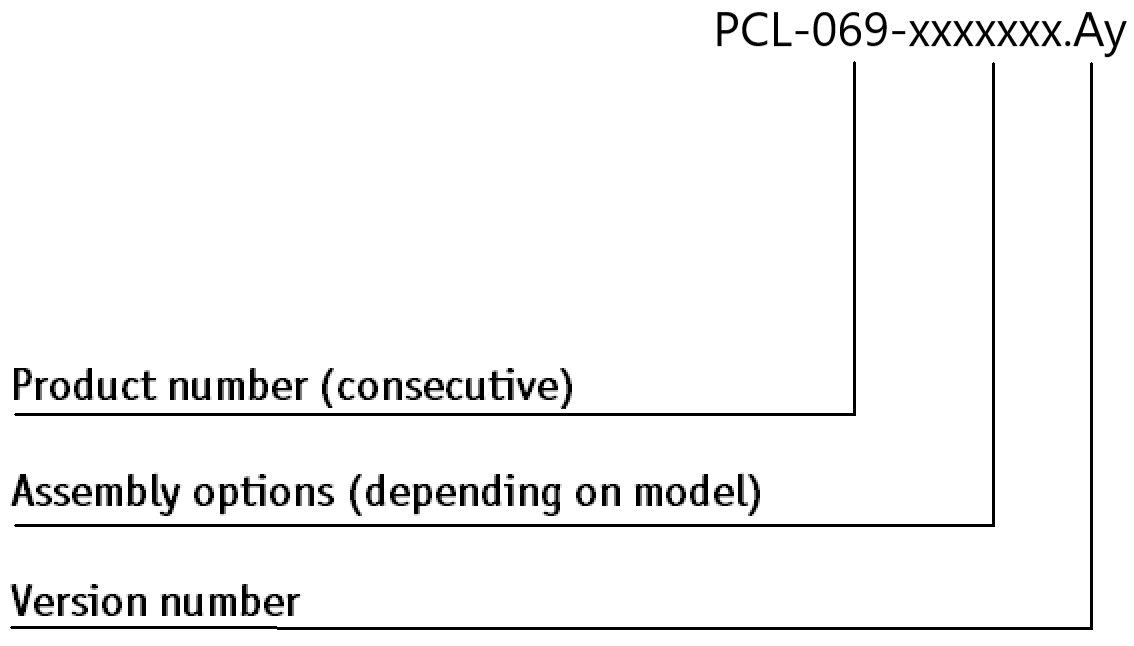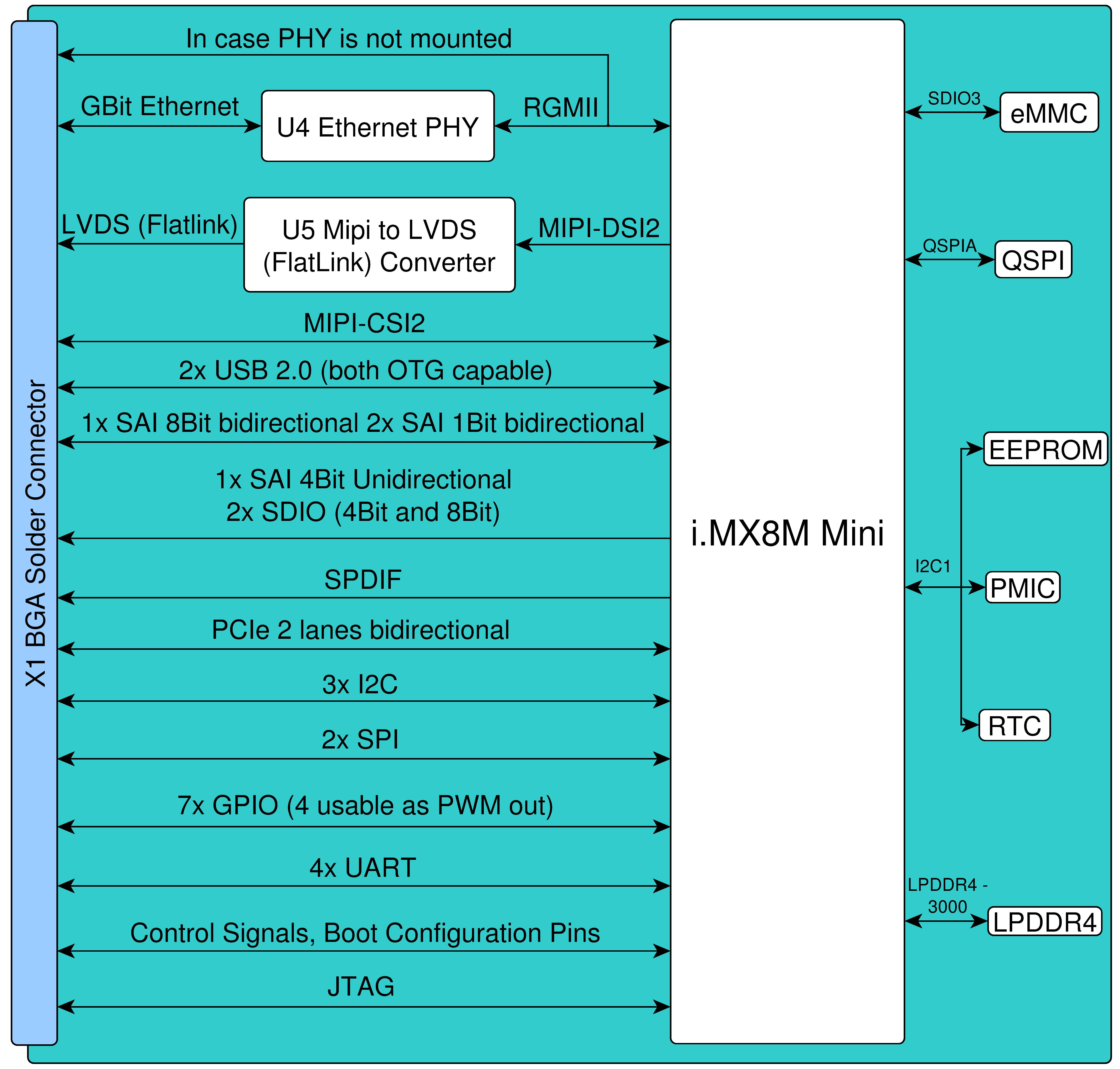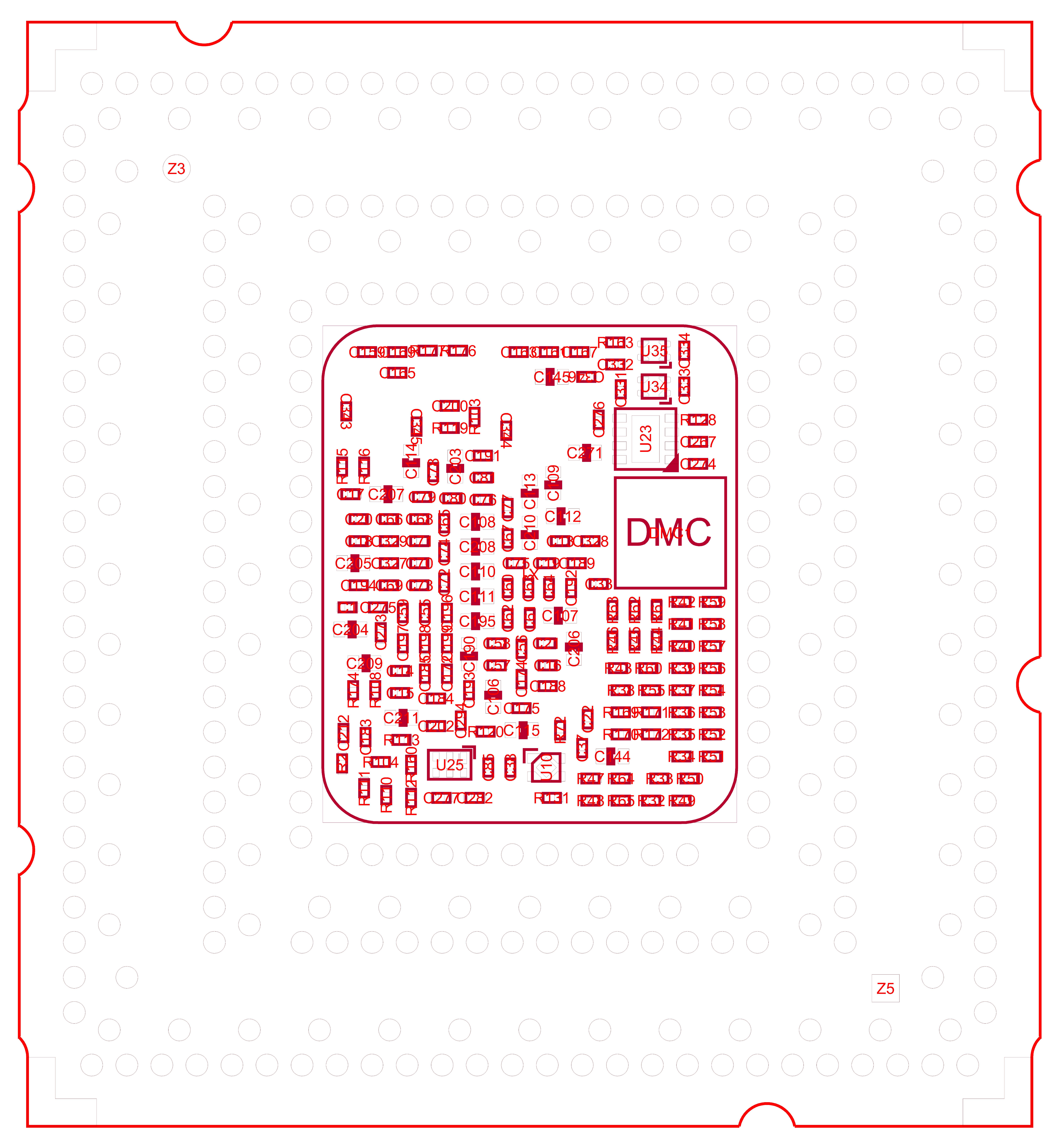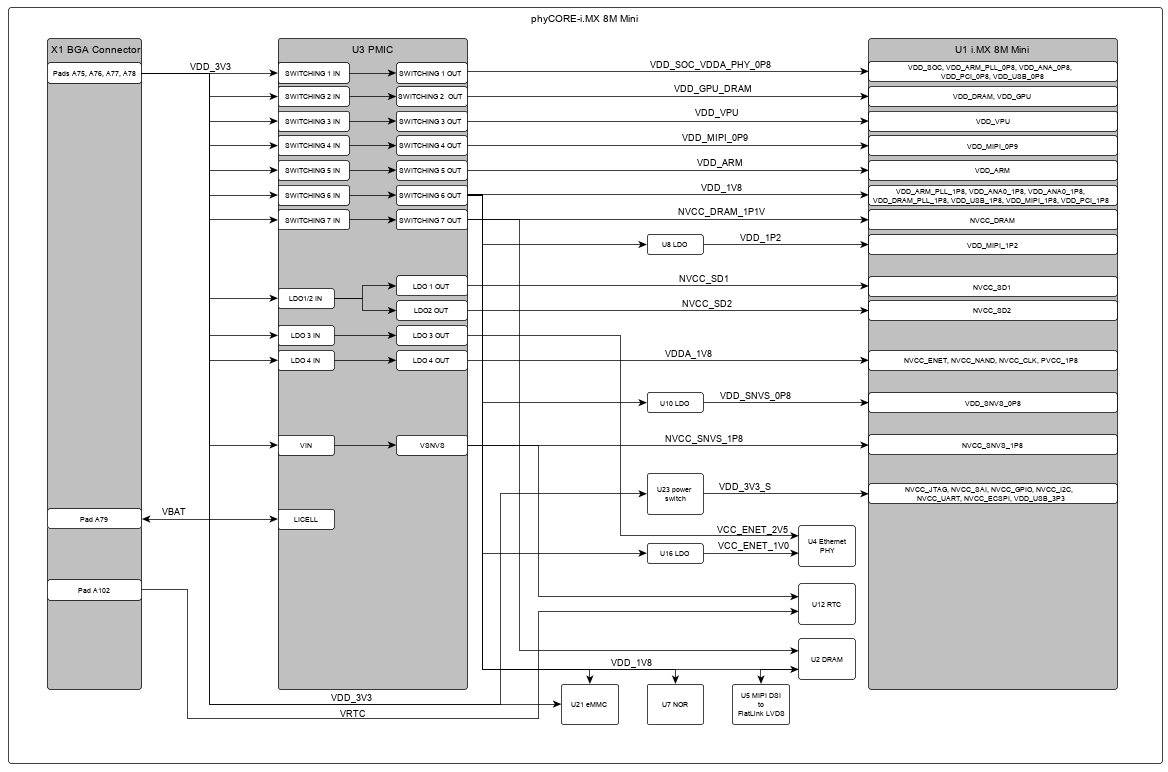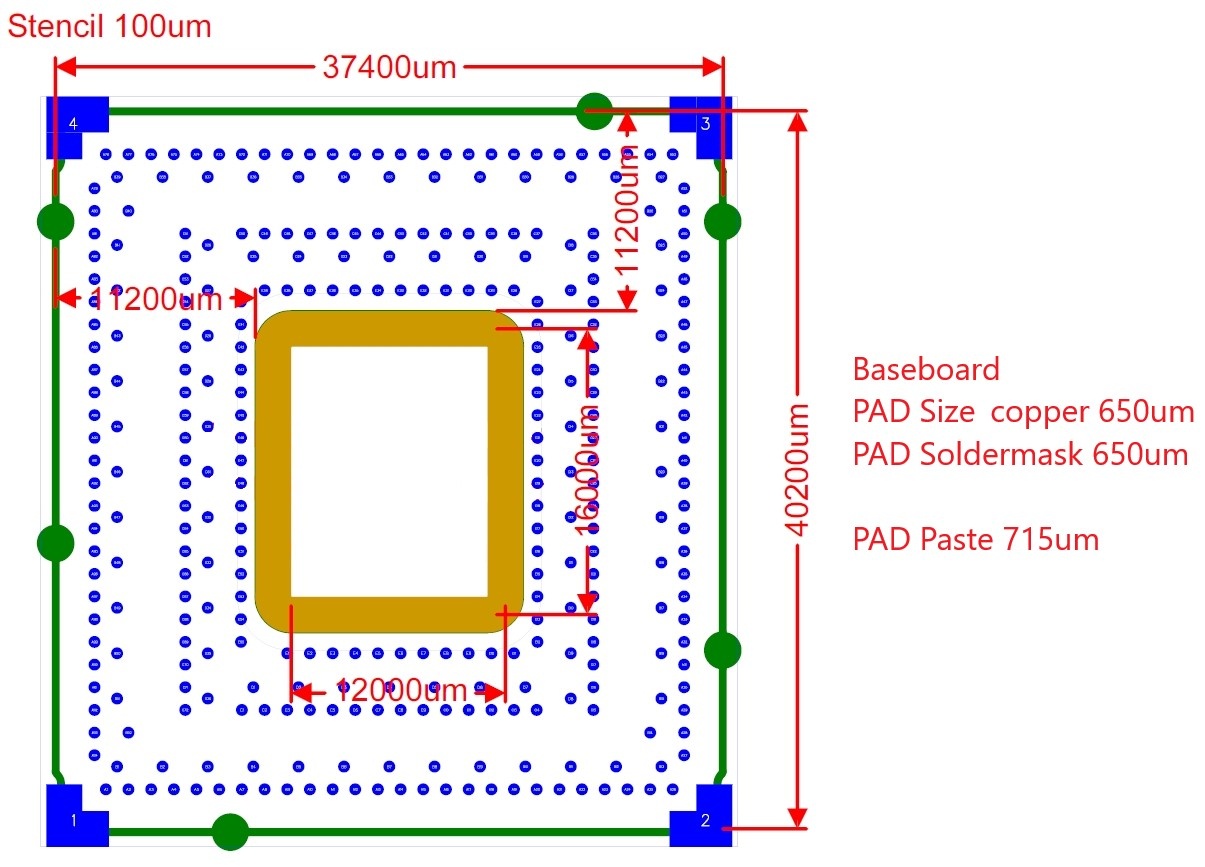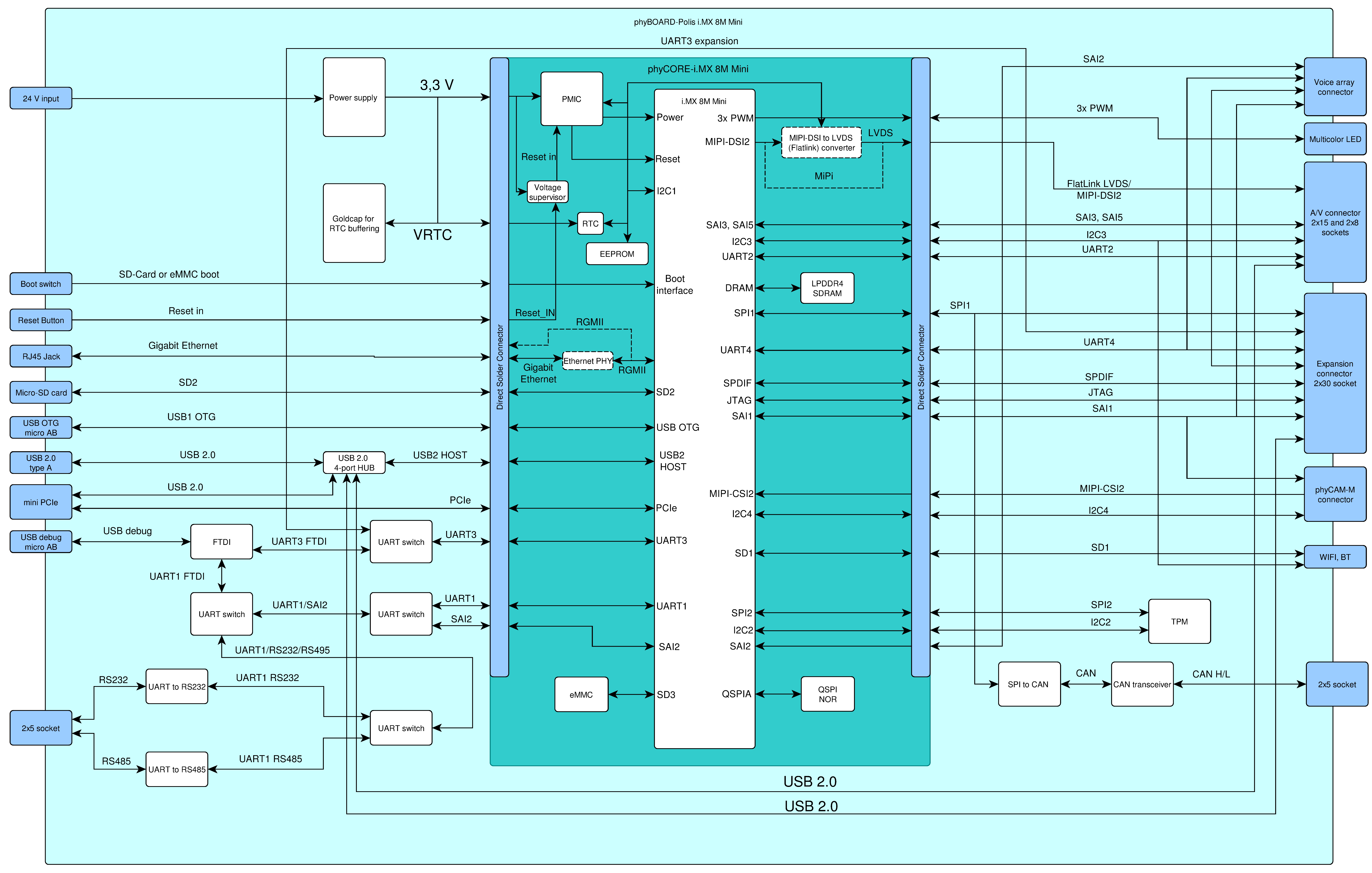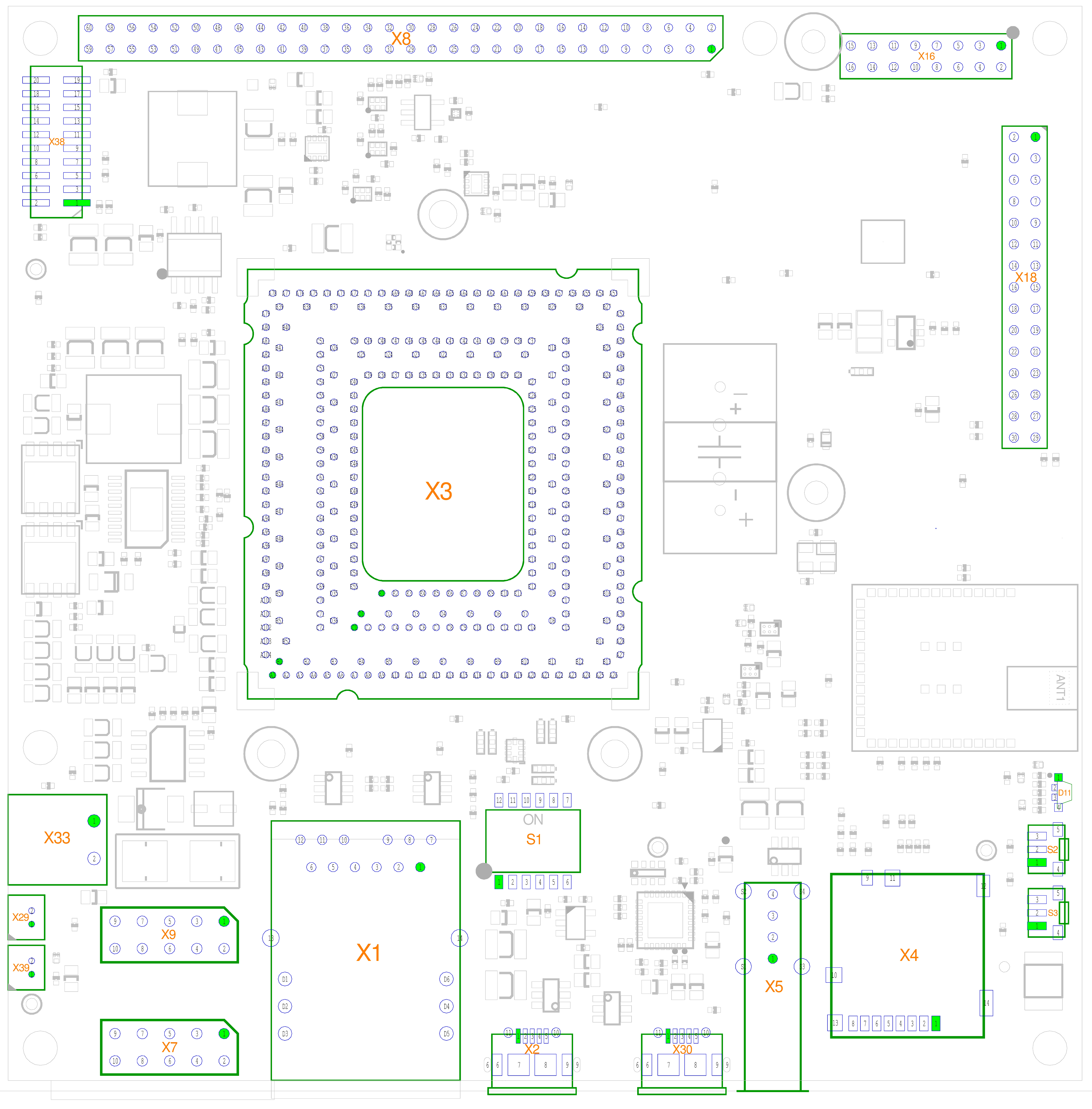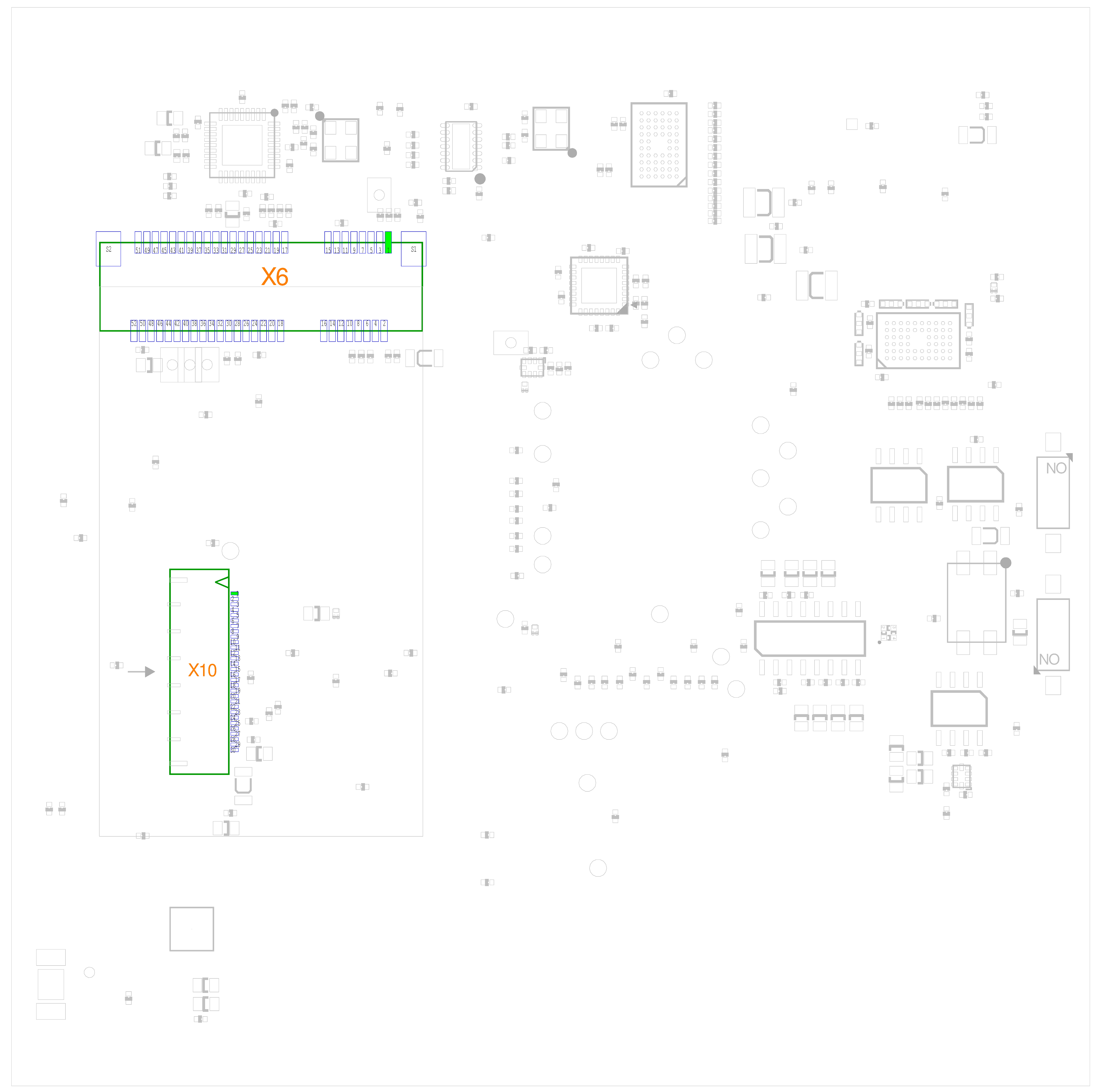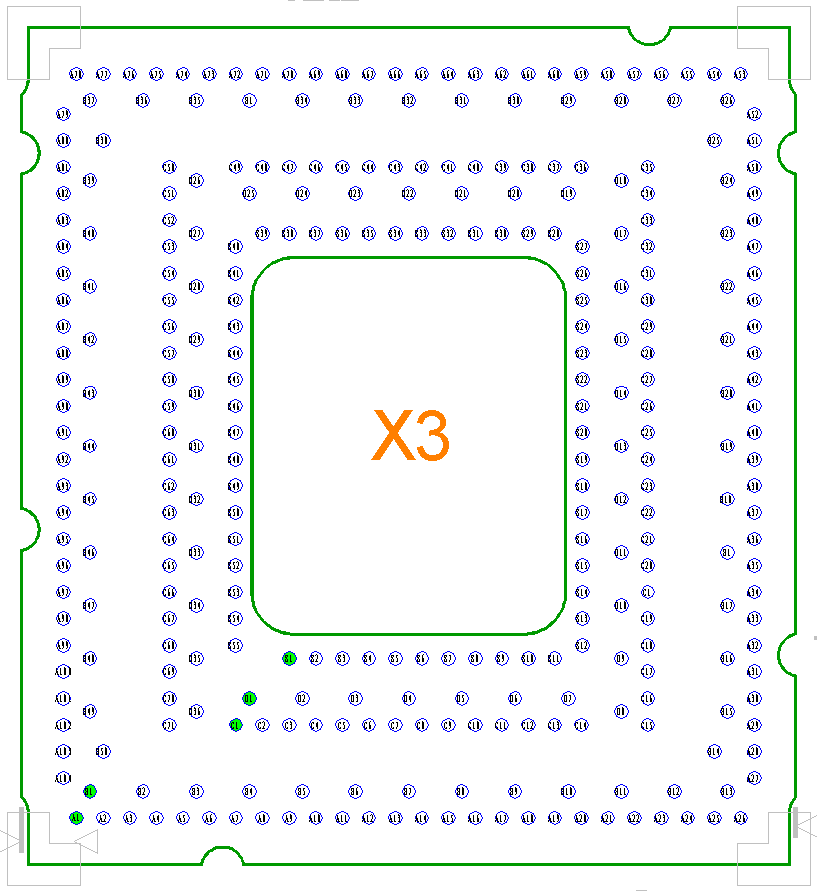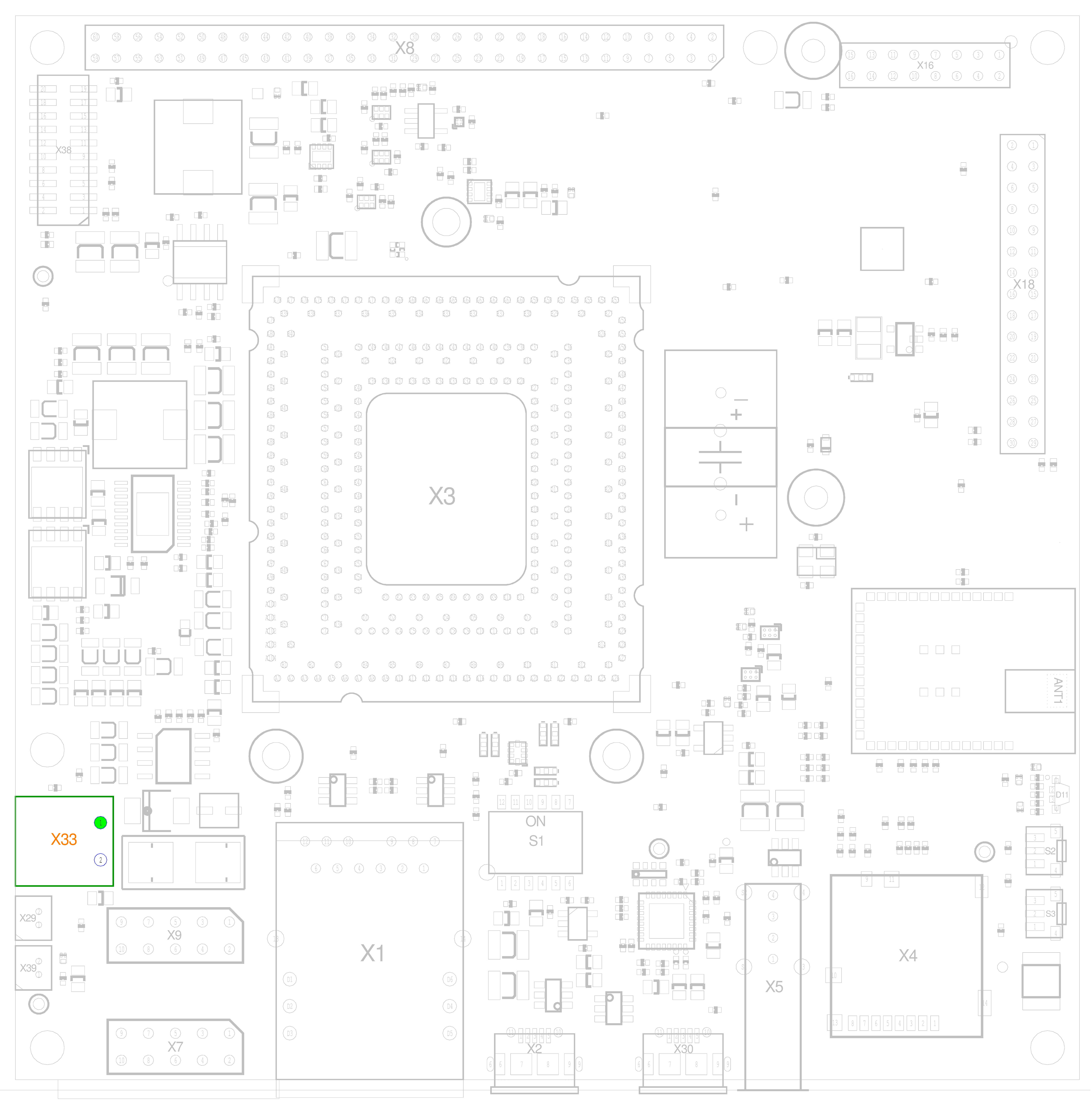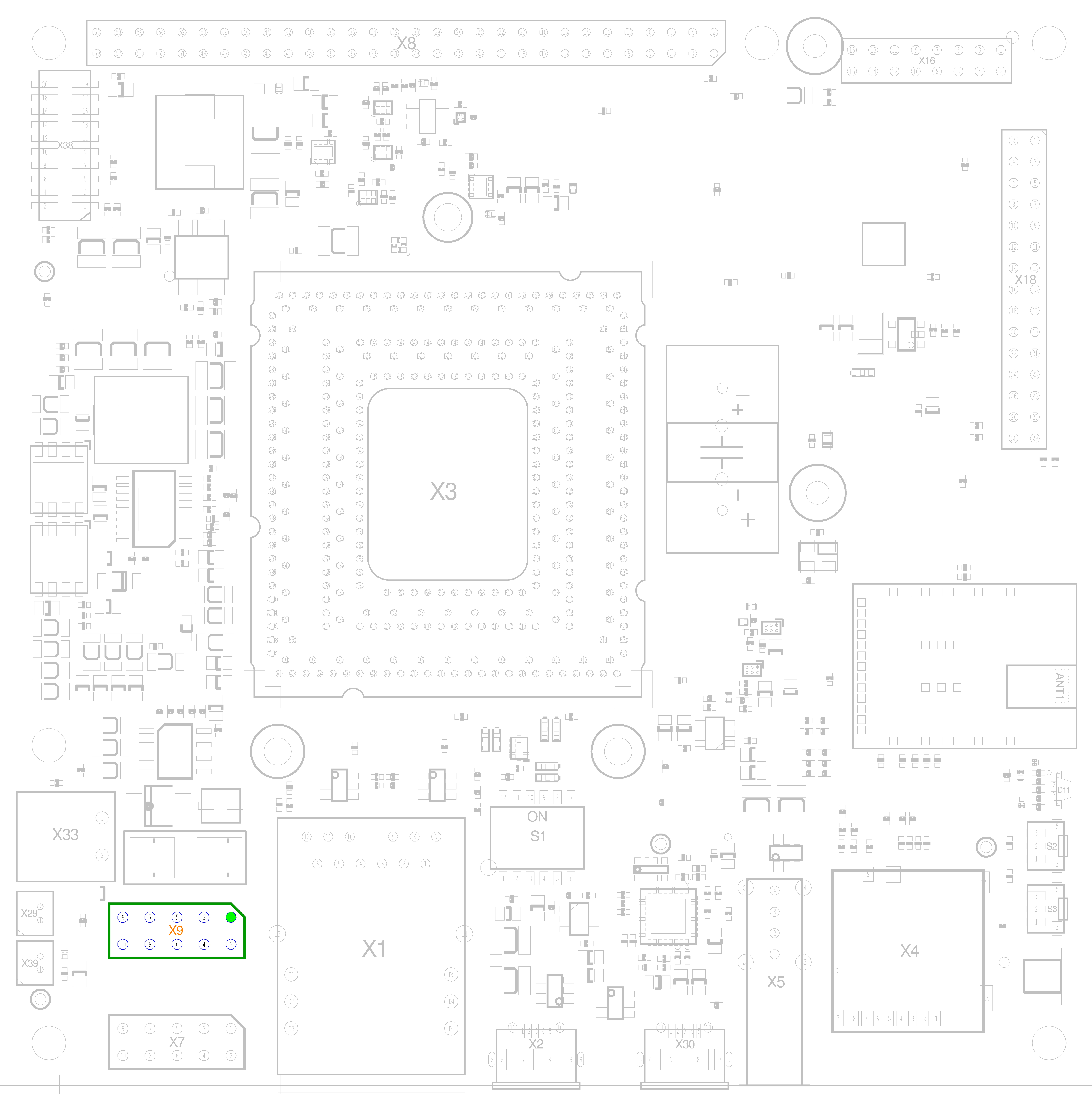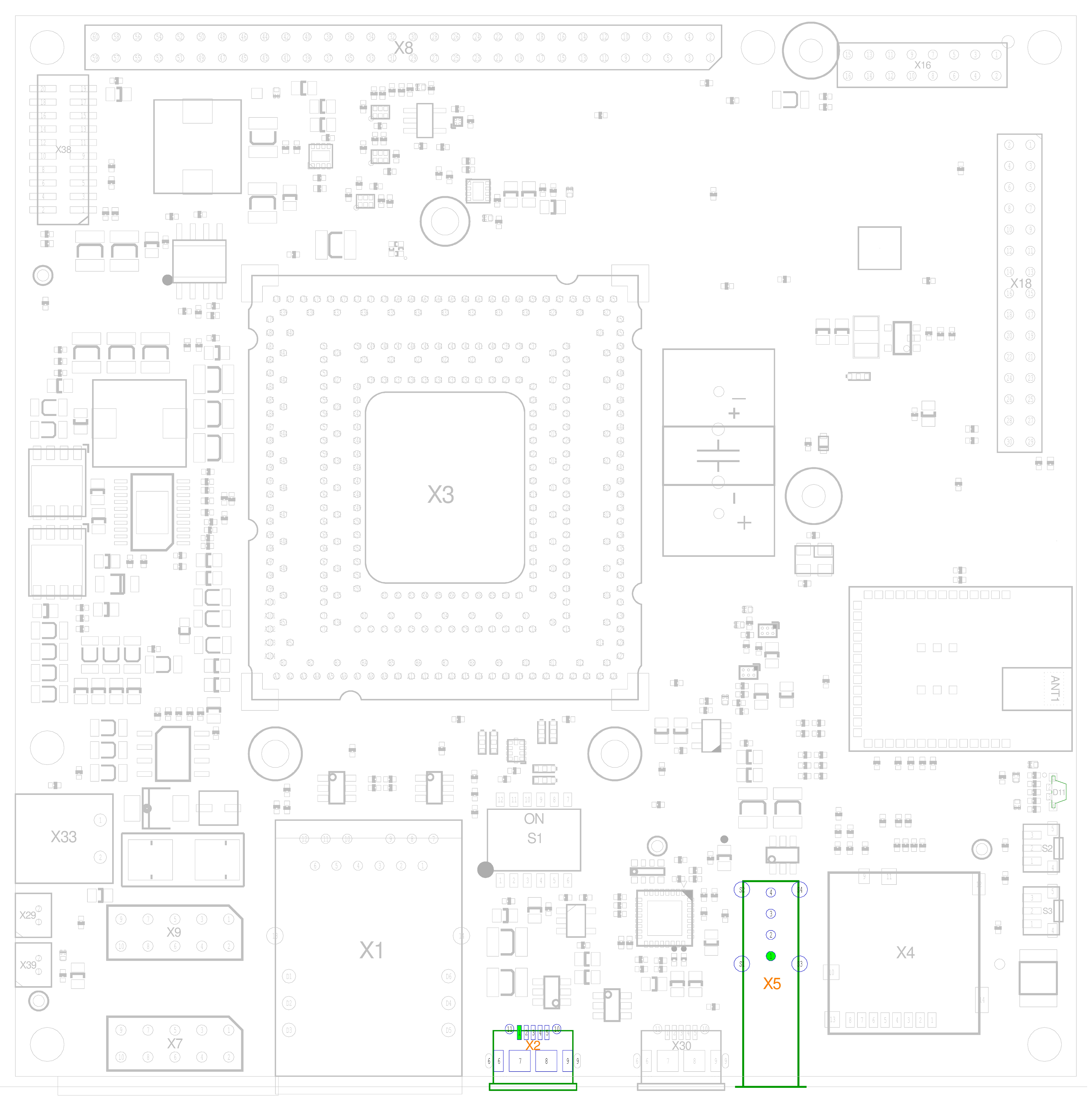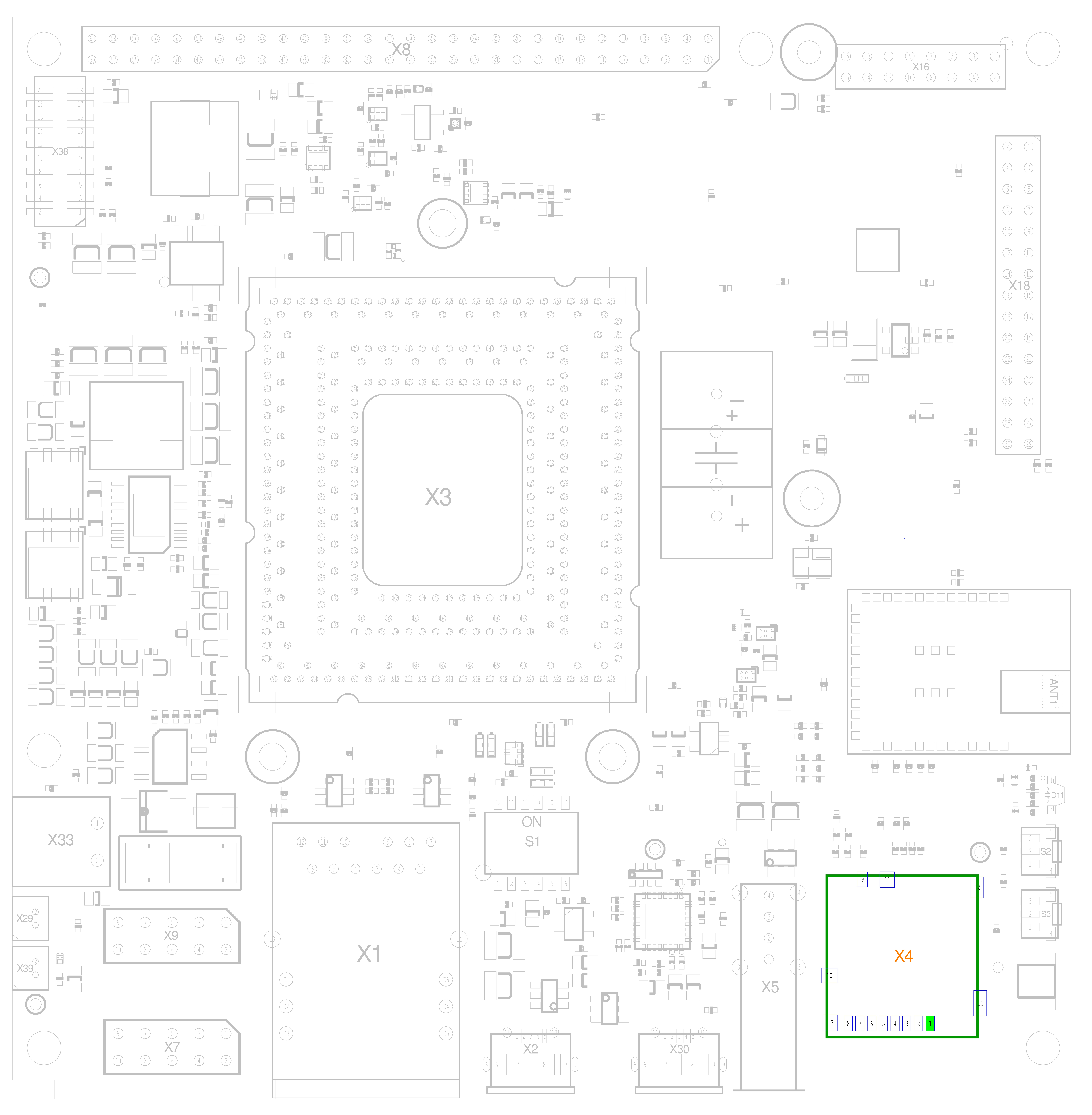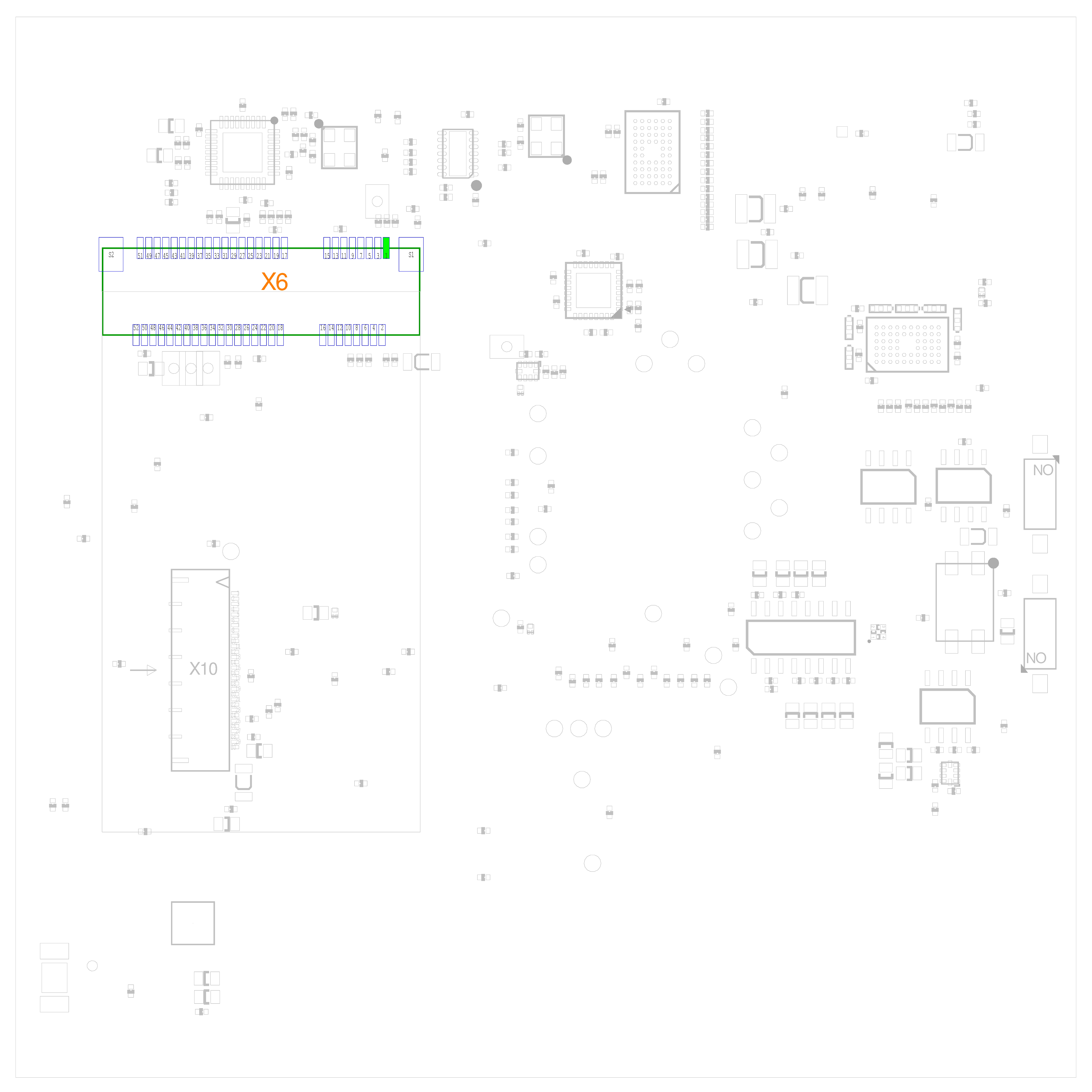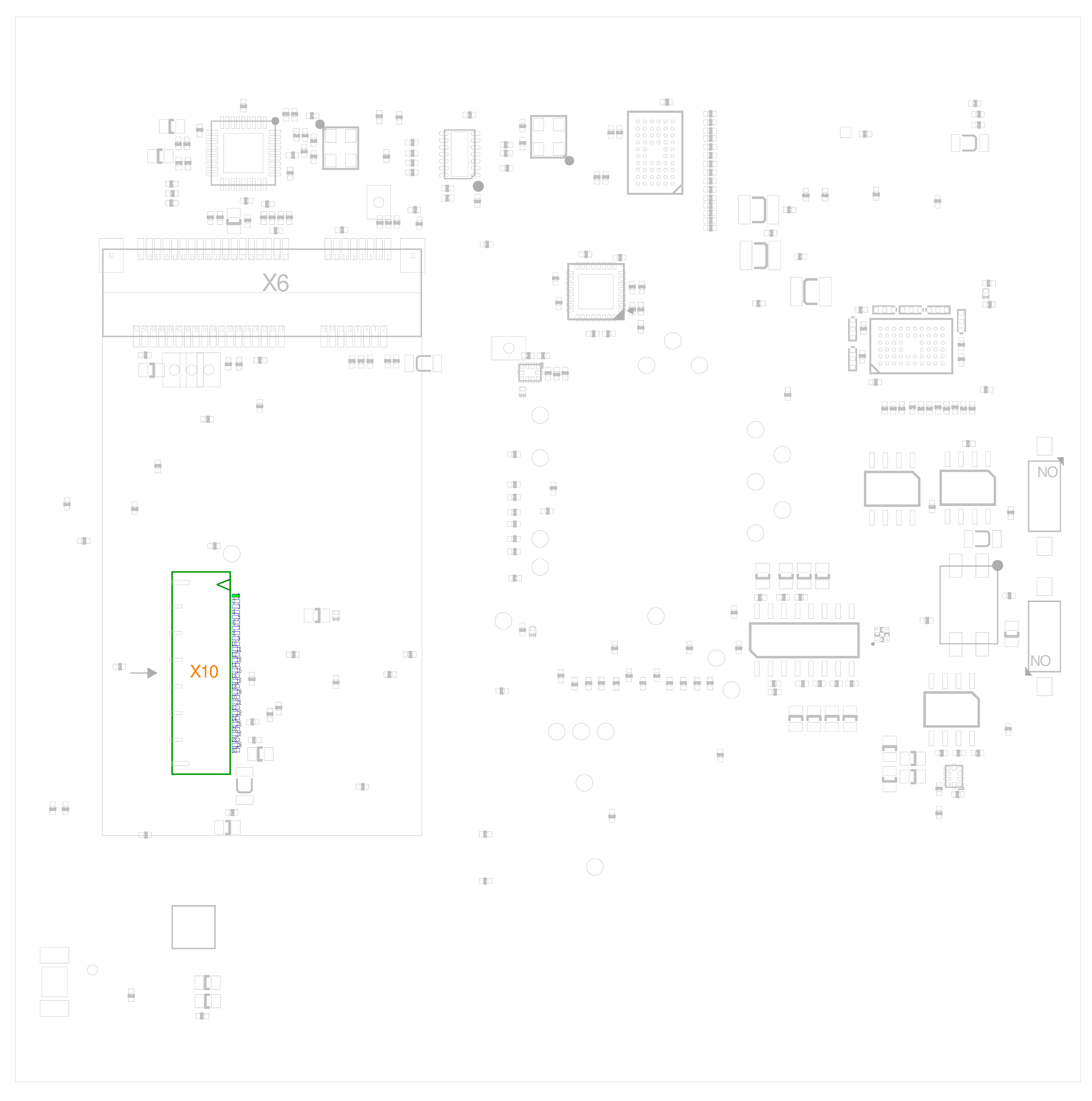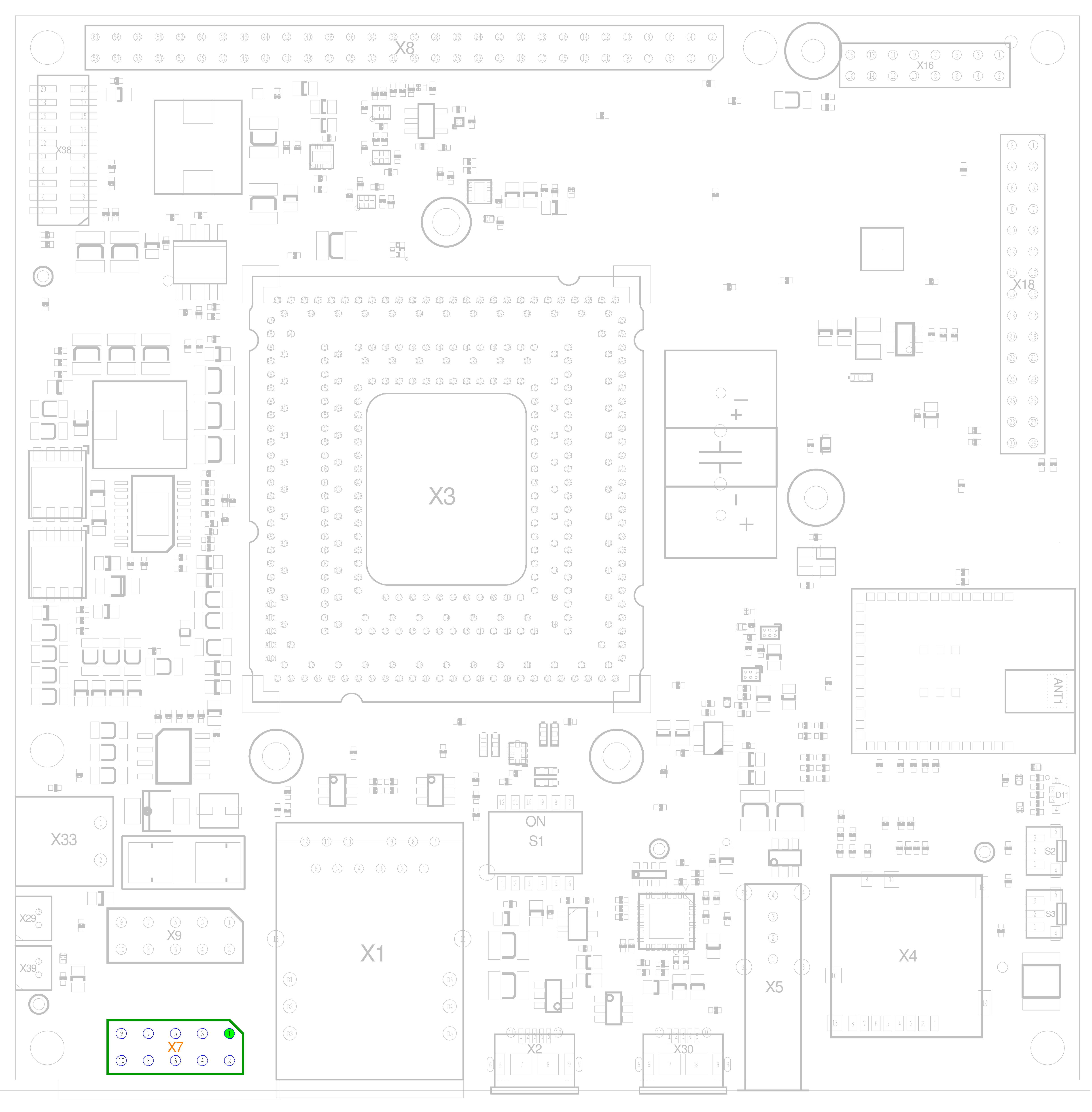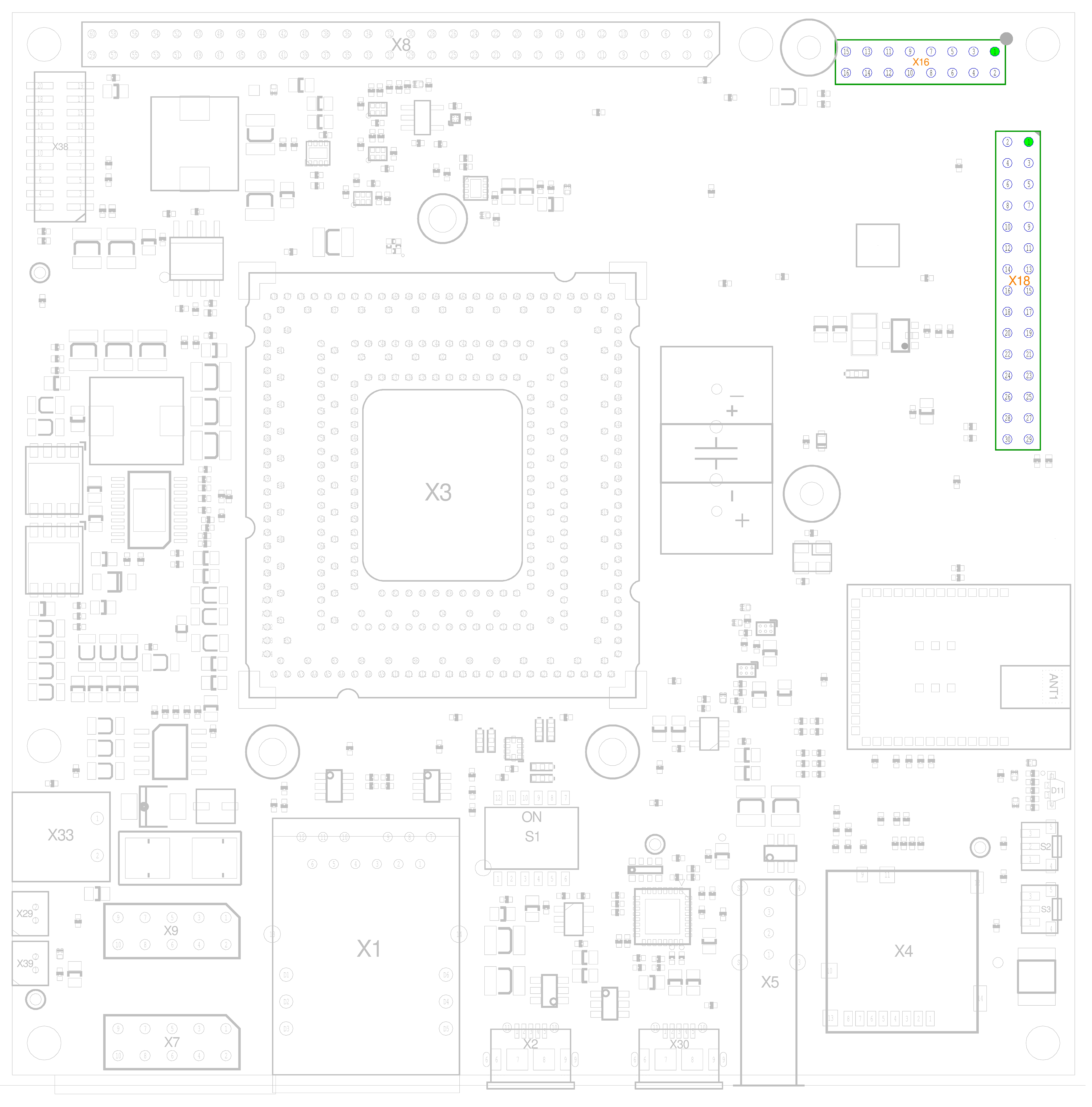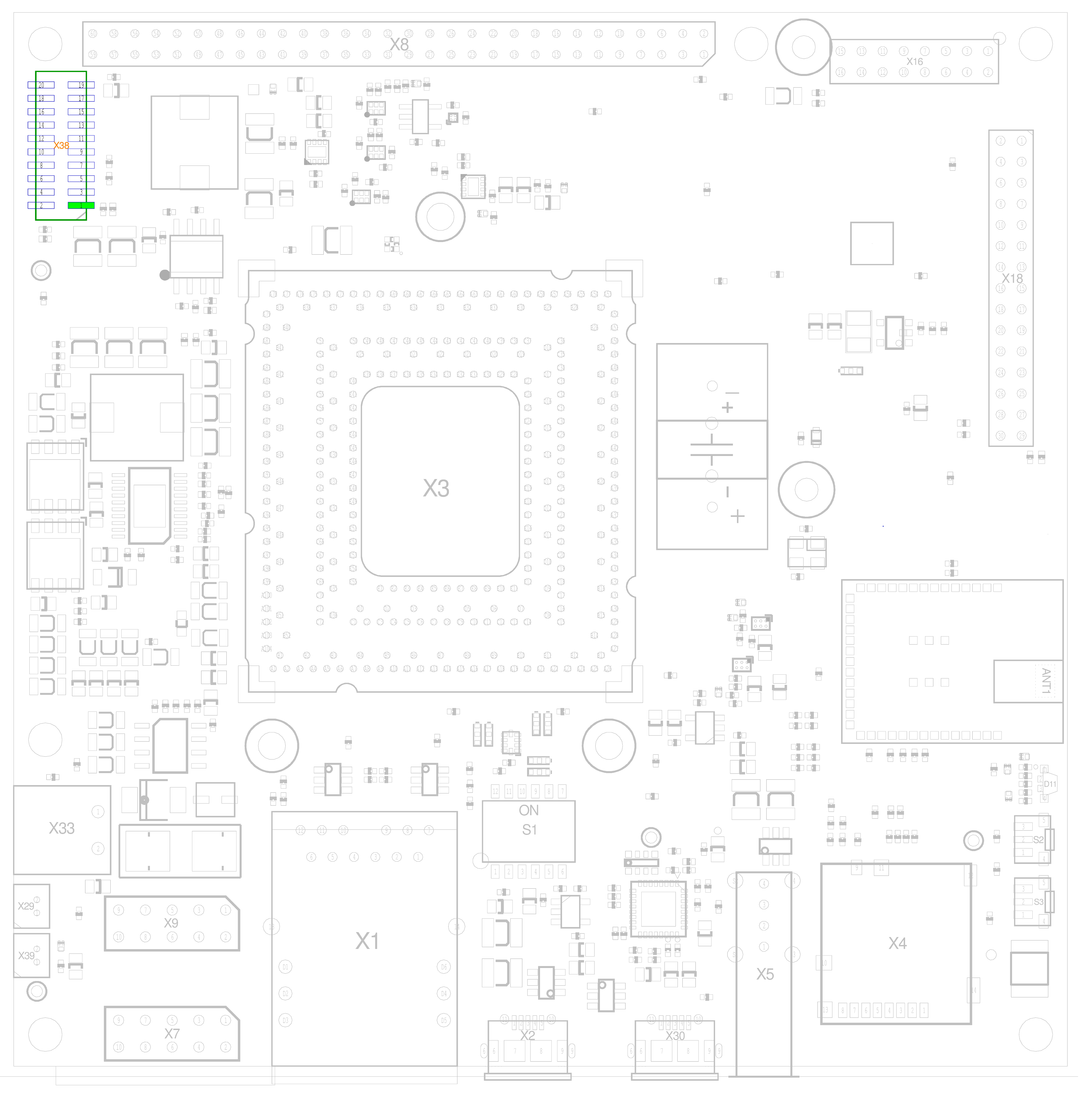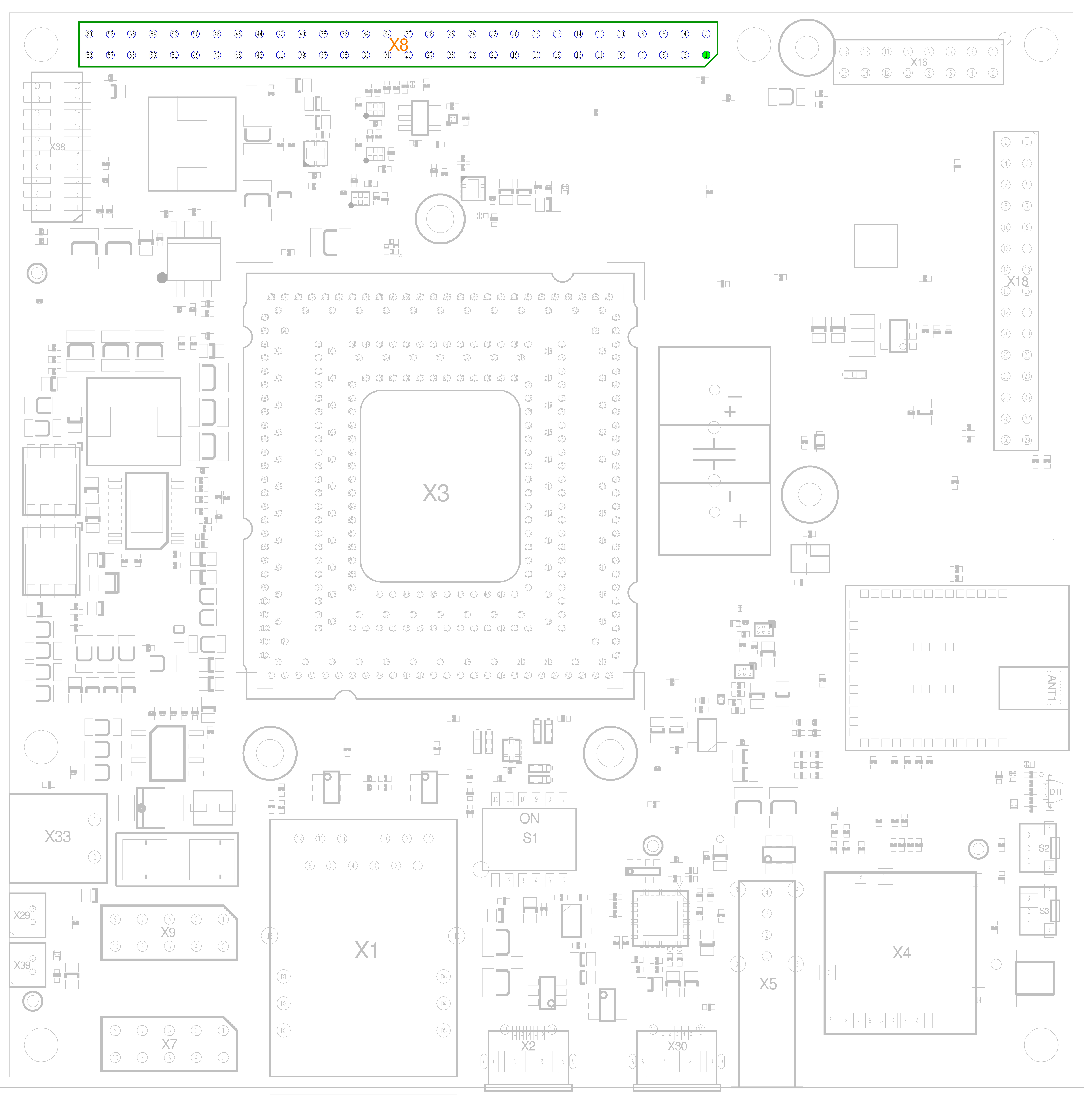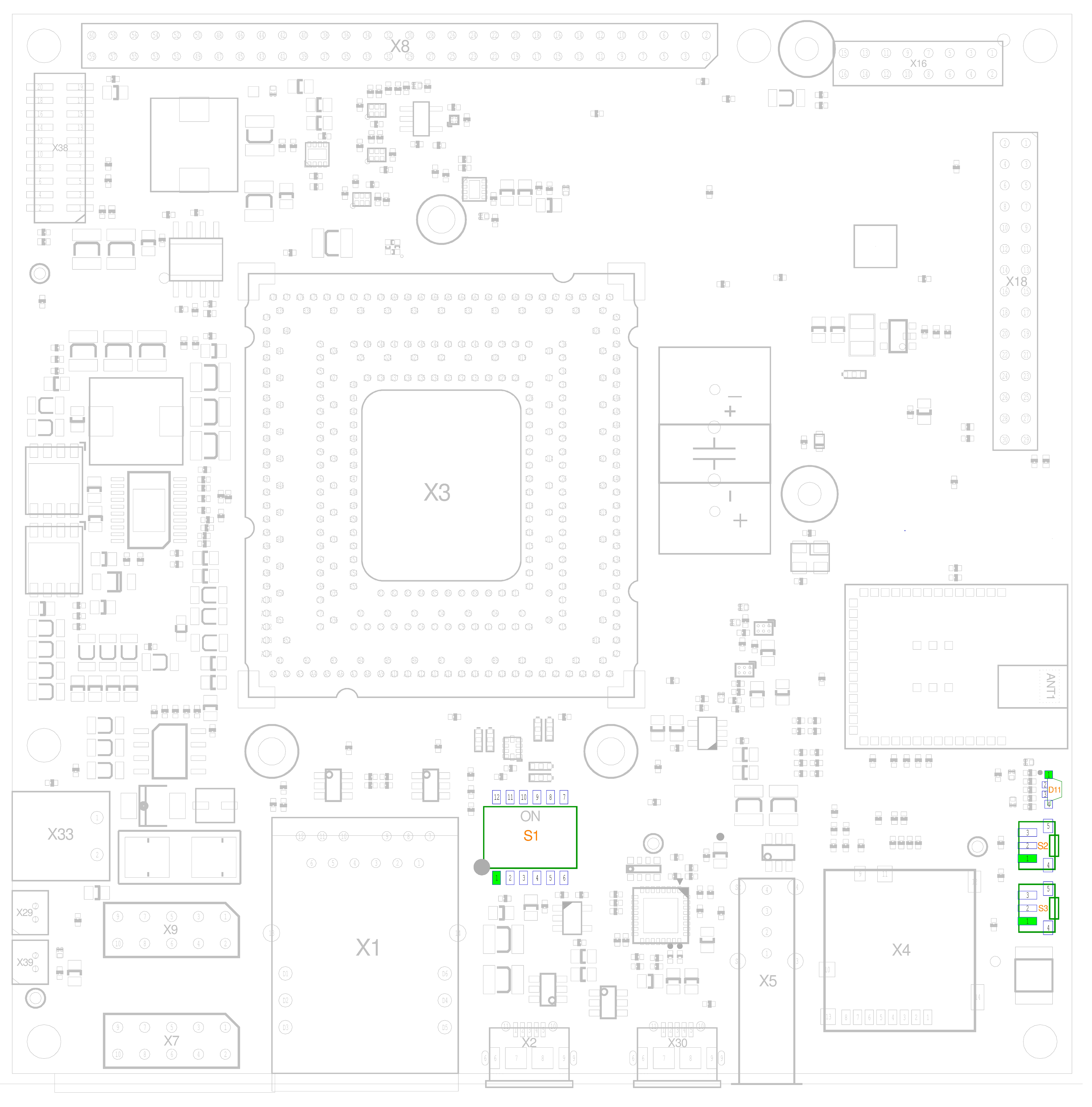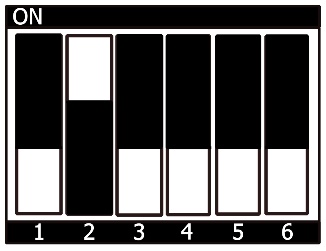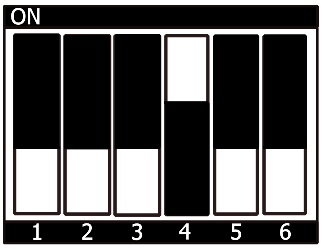Hardware Manual - phyCORE-i.MX 8M Mini/phyBOARD-Polis (1518.1a/1532.1) (L-862e.A0)
Table of Contents
Copyrighted products are not explicitly indicated in this manual. The absence of the trademark (™ or ®) and copyright (©) symbols does not imply that a product is not protected. Additionally, registered patents and trademarks are similarly not expressly indicated in this manual.
The information in this document has been carefully checked and is considered to be entirely reliable. However, PHYTEC Messtechnik GmbH assumes no responsibility for any inaccuracies. PHYTEC Messtechnik GmbH neither gives any guarantee nor accepts any liability whatsoever for consequential damages resulting from the use of this manual or its associated product. PHYTEC Messtechnik GmbH reserves the right to alter the information contained herein without prior notification and accepts no responsibility for any damages that might result.
Additionally, PHYTEC Messtechnik GmbH offers no guarantee nor accepts any liability for damages arising from the improper usage or improper installation of the hardware or software. PHYTEC Messtechnik GmbH further reserves the right to alter the layout and/or design of the hardware without prior notification and accepts no liability for doing so.
@ Copyright 2020 PHYTEC Messtechnik GmbH, D-55129 Mainz.
Rights - including those of translation, reprint, broadcast, photomechanical or similar reproduction and storage or processing in computer systems, in whole or in part - are reserved. No reproduction may occur without the express written consent from PHYTEC Messtechnik GmbH.
| EUROPE | NORTH AMERICA | FRANCE | INDIA | CHINA |
Address: | PHYTEC Messtechnik GmbH | PHYTEC America LLC | PHYTEC France | PHYTEC Embedded Pvt. Ltd | PHYTEC Information Technology (Shenzhen) Co. Ltd. |
Ordering Information: | +49 6131 9221-32 | +1 800 278-9913 | +33 2 43 29 22 33 | +91-80-4086 7046/48 sales@phytec.in | +86-755-3395-5875 sales@phytec.cn |
Technical Support: | +49 6131 9221-31 | +1 206 780-9047 | +91-80-4086 7047 support@phytec.in | support@phytec.cn | |
Fax: | +49 6131 9221-33 | +1 206 780-9135 | +33 2 43 29 22 34 | +86-755-3395-5999 | |
Web Site: | http://phytec.in | http://www.phytec.cn |
Conventions, Abbreviations, and Acronyms
This hardware manual describes the PCL-069 System on Module, referred to as phyCORE®-i.MX 8M Mini, and the PB-02820-xxxxx.Ax, referred to as phyBOARD®-Polis. The manual specifies the phyCORE-i.MX 8M Mini and phyBOARD-Polis' design and function. Precise specifications for the NXP® Semiconductor i.MX 8M Mini microcontrollers can be found in thei.MX 8M Mini Microcontroller Data Sheet/Reference Manual.
Tip
Due to part maintenance for our products (which are subject to continuous changes), we refrain from providing detailed, part-specific information within this manual. Please read the section Product Change Management and Information Regarding Parts Populated on the SOM / SBC within the Preface for more information.
Tip
The BSP delivered with the phyCORE-i.MX 8M Mini includes drivers and/or software for controlling all components such as interfaces, memory, etc. Programming close to hardware at register level is not necessary in most cases. For this reason, this manual contains no detailed description of the controller's registers or information relevant to software development. Please refer to the i.MX 8M Mini Reference Manual, if such information is needed to connect customer-designed applications.
Conventions
The conventions used in this manual are as follows:
- Signals that are preceded by an "n", "/", or “#”character (e.g.: nRD, /RD, or #RD), or that have a dash on top of the signal name (e.g.: RD) are designated as active low signals. That is, their active state is when they are driven low, or are driving low.
- A "0" indicates a logic zero or low-level signal, while a "1" represents a logic one or high-level signal.
- The hex-numbers given for addresses of I2C devices always represent the 7 MSB of the address byte. The correct value of the LSB which depends on the desired command (read (1), or write (0)) must be added to get the complete address byte. E.g. given address in this manual 0x41 => complete address byte = 0x83 to read from the device and 0x82 to write to the device
- Tables that describe jumper settings show the default position in bold,bluetext.
Types of Signals
Different types of signals are brought out at the phyCORE-Connector. The following table lists the abbreviations used to specify the type of a signal.
| Signal Type | Description | Abbreviation |
|---|---|---|
| Power | Supply voltage input | PWR_I |
| Ref-Voltage | Reference voltage output | REF_O |
| Input | Digital input | I |
| Input-Pullup | Input with pull up | I-PU |
| Output | Digital output | O |
| IO | Bidirectional input/output | I/O |
| OC-Bidir | Open collector input/output with pull up | OC-BI |
| OC-Output | Open collector output without pull up, requires an external pull up | OC |
| OD-Bidir PU | Open drain input/output with pull up | OD-BI |
| OD-Output | Open drain output without pull up, requires an external pull up | OD |
| OD-Output-Pullup | Open drain output with pull up | OD-PU |
| 5V Input PD | 5 V tolerant input with pull down | 5V_PD |
| USB IO | Differential line pairs 90 Ohm USB level bidirectional input/output | USB_I/O |
| ETHERNET Input | Differential line pairs 100 Ohm Ethernet level input | ETH_I |
| ETHERNET Output | Differential line pairs 100 Ohm Ethernet level output | ETH_O |
| ETHERNET IO | Differential line pairs 100 Ohm Ethernet level bidirectional input/output | ETH_I/O |
| PCIe Input | Differential line pairs 85 Ohm PCIe level input | PCIe_I |
| PCIe Output | Differential line pairs 85 Ohm PCIe level output | PCIe_O |
| MIPI CSI-2 Input | Differential line pairs 100 Ohm MIPI CSI‑2 level input | CSI2_I |
| MIPI DSI-2 Output | Differential line pairs 100 Ohm MIPI DSI-2 level input | DSI2_O |
| CAN FD IO | Differential line pairs 120 Ohm | CAN_I/O |
| CAN FD IO | Differential line pairs 120 Ohm | CAN_I/O |
| Wireless | Wireless signal input/output | WL_I/O |
Abbreviations and Acronyms
Many acronyms and abbreviations are used throughout this manual. Use the table below to navigate any unfamiliar terms used in this document.
| Abbreviation | Definition |
|---|---|
| BGA | Ball Grid Array |
BSP | Board Support Package (software delivered with the Development Kit including an operating system (Windows or Linux) preinstalled on the module and development tools) |
CB | Carrier board; used in reference to the phyCORE development kit carrier board |
EMI | Electromagnetic Interference |
GPI | General-purpose input |
GPIO | General-purpose input and output |
GPO | General-purpose output |
IRAM | Internal RAM; the internal static RAM on the NXP® Semiconductor i.MX 8M microcontroller |
J | Solder jumper; these types of jumpers require solder equipment to remove and place |
JP | Solderless jumper; these types of jumpers can be removed and placed by hand with no special tools |
| OEM | Original Equipment Manufacturers |
PCB | Printed circuit board |
| PCM | Product Change Management |
| PCN | Product Change Notification |
PMIC | Power management IC |
RTC | Real-time clock |
| SBC | Single Board Computer |
SMT | Surface mount technology |
SOM | System on Module; used in reference to the PCL-066 /phyCORE®-i.MX 8M module |
Sx | User button Sx (e.g. S1, S2, etc.) used in reference to the available user buttons, or DIP-Switches on the carrier board |
Sx_y | Switch y of DIP-Switch Sx; used in reference to the DIP-Switch on the carrier board |
| VM | Virtual Machine |
Abbreviations and Acronyms Used in this Manual
Preface
As a member of PHYTEC's phyCORE® product family, the phyCORE‑i.MX 8M Mini is one of a series of PHYTEC System on Modules (SOMs) that can be populated with different controllers, various types of memory (RAM, NAND flash, eMMC), and many other features. This, in turn, offers increased kinds of functions and configurations. PHYTEC supports a variety of 8/16/32/64 bit controllers in two ways:
- As the basis for Rapid Development Kits which serve as a reference and evaluation platform.
- As insert-ready, fully functional phyCORE® OEM modules, which can be embedded directly into the user’s peripheral hardware design.
Implementation of an OEM-able SOM subassembly as the "core" of your embedded design allows for increased focus on hardware peripherals and firmware without expending resources to "reinvent" microcontroller circuitry. Furthermore, much of the value of the phyCORE® module lies in its layout and test.
Production-ready Board Support Packages (BSPs) and Design Services for our hardware will further reduce development time and risk and allows for increased focus on product expertise. Take advantage of PHYTEC products to shorten time-to-market, reduce development costs, and avoid substantial design issues and risks. With this new innovative full system solution, new ideas can be brought to market in the most timely and cost-efficient manner.
For more information go to:
http://www.phytec.de/de/leistungen/entwicklungsunterstuetzung.html
or
http://www.phytec.eu/europe/oem-integration/evaluation-start-up.html
Ordering Information
The part numbering of the phyCORE has the following structure:
Product Specific Information and Technical Support
In order to receive product-specific information on all future changes and updates, we recommend registering at:
http://www.phytec.de/de/support/registrierung.html or http://www.phytec.eu/europe/support/registration.html
For technical support and additional information concerning your product, please visit the support section of our website which provides product-specific information, such as errata sheets, application notes, FAQs, etc.
https://www.phytec.de/produkt/system-on-modules/phycore-imx-8m-mini-nano/
or
https://www.phytec.eu/product-eu/system-on-modules/phycore-imx-8m-mini-nano/
Note
Assembly Options include a choice of Controller, RAM (Size/Type), Size of NAND Flash, interfaces available, vanishing, temperature range, as well as other features. Please contact our sales team to get more information on the ordering options available.
Declaration of Electro Magnetic Conformity of the PHYTEC phyCORE®‑i.MX 8M Mini
PHYTEC System on Module (henceforth products) are designed for installation in electrical appliances or as dedicated Evaluation Boards (i.e.: for use as a test and prototype platform for hardware/software development) in laboratory environments.
Warning
PHYTEC products lacking protective enclosures are subject to damage by ESD and, therefore, must be unpacked, handled, or operated in environments in which sufficient precautionary measures have been taken in respect to ESD-dangers. Only appropriately trained personnel such as qualified electricians, technicians, and engineers should handle and/or operate these products. Moreover, PHYTEC products should not be operated without protection circuitry if connections to the product's pin header rows are longer than 3 m.
PHYTEC products fulfill the norms of the European Union’s Directive for Electro Magnetic Conformity in accordance with the descriptions and rules of usage indicated in this hardware manual (particularly in respect to the pin header row connectors, power connector, and serial interface to a host-PC).
Tip
Implementation of PHYTEC products into target devices, as well as user modifications and extensions of PHYTEC products, is subject to renewed establishment of conformity to and certification of Electro Magnetic Directives. Users should ensure conformance following any modifications to the products as well as the implementation of the products into target systems.
Product Change Management and Information Regarding Parts Populated on the SOM / SBC
With the purchase of a PHYTEC SOM / SBC you will, in addition to our hardware and software possibilities, receive free obsolescence maintenance service for the hardware we provide. Our PCM (Product Change Management) team of developers is continuously processing all incoming PCN's (Product Change Notifications) from vendors and distributors concerning parts that are used in our products. Possible impacts on the functionality of our products due to changes in functionality or obsolesce of certain parts are constantly being evaluated in order to take the right measures either in purchasing decisions or within our hardware/software design.
Our general philosophy here is: We never discontinue a product as long as there is a demand for it.
Therefore, we have established a set of methods to fulfill our philosophy:
Avoidance strategies:
- Avoid changes by evaluating the longevity of parts during the design-in phase.
- Ensure the availability of equivalent second source parts.
- Stay in close contact with part vendors to be aware of roadmap strategies.
Change management in the rare event of an obsolete and non-replaceable part:
- Ensure long term availability by stocking parts through last time buy management according to product forecasts.
- Offer long term frame contracts to customers.
Change management in case of functional changes:
- Avoid impacts on product functionality by choosing equivalent replacement parts.
- Avoid impacts on product functionality by compensating changes through hardware redesign or backward-compatible software maintenance.
- Provide early change notifications concerning functional, relevant changes to our products.
We refrain from providing detailed part specific information within this manual, which can be subject to continuous changes, due to part maintenance for our products.
In order to receive reliable, up-to-date, and detailed information concerning parts used for our product, please contact our support team through the contact information given within this manual.
PHYTEC Documentation
PHYTEC will provide a variety of hardware and software documentation for all of our products. This includes any or all of the following:
- Quickstart Guide: A short guide on how to set up and boot a phyCORE board along with brief information on building a BSP, the device tree, and accessing peripherals.
- Hardware Manual: A detailed description of the System on Module and accompanying carrier board.
- Yocto Guide: A comprehensive guide for the Yocto version the phyCORE uses. This guide contains an overview of Yocto; an introduction, installing and customizing the PHYTEC BSP; how to work with programs like Poky and Bitbake; and much more.
- BSP Manual: A manual specific to the BSP version of the phyCORE. Information such as how to build the BSP, booting, updating software, device tree, and accessing peripherals can be found here.
- Development Environment Guide: This guide shows how to work with the Virtual Machine (VM) Host PHYTEC has developed and prepared to run various Development Environments. There are detailed step-by-step instructions for Eclipse and Qt Creator, which are included in the VM. There are instructions for running demo projects for these programs on a phyCORE product as well. Information on how to build a Linux host PC yourself is also a part of this guide.
- Pin Muxing Table: phyCORE SOMs have an accompanying pin table (in Excel format). This table will show the complete default signal path, from processor to carrier board. The default device tree muxing option will also be included. This gives a developer all the information needed in one location to make muxing changes and design options when developing a specialized carrier board or adapting a PHYTEC phyCORE SOM to an application.
On top of these standard manuals and guides, PHYTEC will also provide Product Change Notifications, Application Notes, and Technical Notes. These will be done on a case by case basis. Most of the documentation can be found in the applicable download page of our products.
Tip
After finishing the Quickstart Guide, we recommend working through the Development Environment Guide. This will give you a comprehensive overview of the features and functions of both the SOM and carrier board.
phyCORE‑i.MX 8M Mini Introduction
The phyCORE‑i.MX 8M Mini belongs to PHYTEC’s phyCORE System on Module family. The phyCORE SOMs represent the continuous development of the PHYTEC System on Module technology. Like its mini-, micro-, and nanoMODUL predecessors, phyCORE boards integrate all core elements of a microcontroller system on a sub-miniature board and are designed in a manner that ensures their easy expansion and embedding in peripheral hardware developments.
Independent research indicates approximately 70 % of all EMI (Electro-Magnetic Interference) problems are caused by insufficient supply voltage grounding of electronic components in high-frequency environments. The phyCORE board design features an increased pin package, which allows for the dedication of approximately 37 % of all connector pinson the phyCORE boards to Ground. This improves EMI and EMC characteristics and makes it easier to design complex applications meeting EMI and EMC guidelines using phyCORE boards, even in high noise environments.
phyCORE boards achieve their small size through modern SMT and multi-layer design. Due to the complexity of our modules, 0201-packaged SMT components and laser-drilled microvias are used on the boards, providing phyCORE users with access to this cutting edge miniaturization technology for integration into their own design.
The phyCORE‑i.MX 8M Mini is a sub-miniature (37 mm x 40 mm) soldered System on Module populated with the NXP® Semiconductor i.MX 8M Mini microcontroller. Its universal design enables its insertion in a wide range of embedded applications. All controller signals and ports extend from the controller to a 1,27mm pitch BGA Ball. Each signal ball has an associated GND pin which ensures the GND reference for each signal. The ball packages are placed in lines. There is enough space between lines to ensure the possibility of easy routing out of the package. Signal balls for high-speed signals like HDMI are placed on the outer lines, making it easy to route to the top layer of the carrier board. The SOM is designed to support carrier boards with as little as 6 layers to reduce PCB costs. For proper EMC characteristics, it is necessary to place the processor caps directly under the SOM. This required a hole in the carrier board.
The descriptions in this manual are based on the NXP® Semiconductor i.MX 8M Mini. Descriptions of compatible microcontroller derivative functions are not included, as such functions are not relevant for the basic functioning of the phyCORE‑i.MX 8M Mini.
phyCORE‑i.MX 8M Mini Features
The phyCORE‑i.MX 8M Mini offers the following features:
- Insert-ready, sub-miniature (37 mm x 40 mm) System on Module (SOM) sub-assembly in low EMI design, achieved through advanced SMD technology
- Mounted using BGA Technology
- Populated with the NXP® Semiconductor i.MX 8M Mini microcontroller (BGA486 packaging)
- 1.6 GHz core clock frequency (up to 1.8 GHz)
- Boot from different memory devices (eMMC standard)
- Single supply voltage of +3.3 V with onboard power management
- All controller required supplies are generated onboard
- Improved interference safety achieved through multi-layer PCB technology and dedicated ground pins
2 GB (up to 4 GB[1]) LPDDR4 RAM
- 4 GB (up to 32 GB[1]) onboard eMMC
- 4 kB[1] I2C EEPROM
- Two High-Speed USB 2.0 OTG interfaces
One 10/100/1000 MBit Ethernet interface (if Ethernet transceiver is mounted)[2]
- One RGMII interface at TTL level (if Ethernet transceiver is not mounted)[2]
- Three I2C interfaces
- Two SPI interfaces
- One PCIe interface
- Four UART interfaces
- Four PWM outputs
- One LVDS interface (if MIPI-DSI to LVDS converter is mounted)[2]
- One MIPI DSI interface (if MIPI-DSI to LVDS converter is not mounted)[2]
- One MIPI CSI camera interface
- One 4-Bit SD card interface
- One 8-Bit SDIO interface
- SAI audio interface
- Internal RTC
- Available for different temperature grades (Product Temperature Grades)
| 1. | The maximum memory size listed as of the printing of this manual. Please contact PHYTEC for more information about additional or new module configurations available. |
| 2. | Please refer to the order options described in the Preface or contact PHYTEC for more information about additional modules configurations. |
phyCORE-i.MX8M Mini Block Diagram
phyCORE-i.MX 8M Mini Block Diagram
phyCORE-i.MX 8M Mini Component Placement
phyCORE-i.MX 8M Mini Component Placement (Top)
phyCORE-i.MX 8M Mini Component Placement (Bottom)
phyCORE-i.MX 8M Mini Minimal Operating Requirements
We recommend connecting all available VDD_3V3 input pins to the power supply system on a custom carrier board housing the phyCORE-i.MX 8M Mini and, at minimum, the matching number of GND pins neighboring the VDD_3V3 input pins. In addition, proper implementation of the phyCORE-i.MX 8M Mini module into a target application also requires connecting all GND pins.
Refer to Power for more information.
Pin Description
Module connections must not exceed their expressed maximum voltage or current. Maximum signal input values are indicated in the corresponding controller manuals/datasheets. As damage from improper connections varies according to use and application, it is the user's responsibility to take appropriate safety measures to ensure that the module connections are protected from overloading through connected peripherals.
All controller signals extend to BGA Signal Balls (1.27 mm) This allows the phyCORE‑i.MX 8M Mini to be soldered into any target application like a "big chip".
PHYTEC provides a complete pinout table for the phyCORE-i.MX 8M Mini Connector X1. This table contains a complete signal path for the phyCORE‑i.MX 8M Mini and the carrier board phyBOARD-Polis, including signal names, pin muxing paths, and descriptions specific to each pin. It also provides the appropriate voltage domain, signal type (ST), and a functional grouping of the signals. The signal type also includes information about the signal direction. A table describing the signal types can be found with the pinout table.
Warning
- The NXP® Semiconductor i.MX 8M Mini is a multi-voltage operated microcontroller and, as such, special attention should be paid to the interface voltage levels to avoid unintentional damage to the microcontroller and other onboard components. Please refer to the NXP Semiconductor i.MX 8M Mini Reference Manual for details on the functions and features of controller signals and port pins.
- As some of the signals which are brought out on the phyCORE-Connector are used to configure the boot mode for specific boot options, please make sure that these signals are not driven by any device on the baseboard during reset. The signals which may affect the boot configuration are shown in the table phyCORE-Connector Boot Configuration Pins.
- It is necessary to avoid voltages at the IO pins of the phyCORE-i.MX 8M Mini which are sourced from the supply voltage of peripheral devices attached to the SOM during power-up or power–down. These voltages can cause a current flow into the controller, especially if peripheral devices attached to the interfaces of the i.MX 8M Mini are supposed to be powered while the phyCORE‑i.MX 8M Mini is in suspend mode or turned off. To avoid this, bus switches either supplied by VDD_3V3_S on the phyCORE side or having their output enabled to the SOM controlled by the X_PGOOD_OD signal (see External Logic Supply Voltage) must be used.
Tips
- Most of the controller pins have multiple multiplexed functions. As most of these pins are connected directly to the phyCORE-Connector, the alternative functions are available by using the i.MX 8M's pin muxing options. Signal names and descriptions in the accompanying table, however, are in regard to the specification of the phyCORE‑i.MX 8M and the functions defined. Please refer to the i.MX8M Reference Manual or the schematic to get to know about alternative functions. In order to utilize a specific pin's alternative function, the corresponding registers must be configured within the appropriate driver of the BSP.
- The following tables describe the full set of signals available at the phyCORE‑Connector according to the phyCORE-i.MX 8M specification. However, the availability of some interfaces is order-specific (e.g. Camera_0). Thus, some signals might not be available on your module.
- As the phyCORE-i.MX 8M Mini is delivered with the carrier board phyBOARD‑Polis, the pin muxing might be changed within the appropriate BSP in order to support all features of the carrier board. If so, information on the differences from the pinout given in the following tables can be found in the carrier board's documentation.
Power
The phyCORE‑i.MX 8M Mini operates off of a single power supply voltage. The following sections discuss the primary power pins on the phyCORE-i.MX 8M Mini Connector X1 in detail.
Primary System Power (VDD_3V3)
The phyCORE‑i.MX 8M Mini operates with a single primary voltage supply. Onboard switching and low dropout regulators generate the 2.5 V, 1.8 V, 1.2 V, 1.1 V, 0.9 V, and 0.8 V voltage rails required by the i.MX 8M Mini CPU and onboard components from the input voltage VDD_3V3.
For proper operation, the phyCORE‑i.MX 8M Mini must be supplied with a voltage source of 3.3 V +4.5 %-4 % with 2 A load at the VDD pins on the phyCORE-i.MX 8M Mini Connector X1.
In order to perform a full power cycle of the phyCORE-i.MX 8M Mini, including the SNVS domain of the PMIC and the CPU, the voltage input rail VDD_3V3 has to remain below 0,3 V for at least 600 ms.
Note
It is recommended to choose a slightly higher value than 3.3 V for VDD_3V3 in order to account for series resistance of 3.3 V load switching components on the SoM. The PHYTEC phyBOARD-Polis for example supplies VDD_3V3 with 3.366 V ±3.5 %.
VDD_3V3: X1 → A75, A76, A77, A78
Connect all VDD_3V3 input pins to your power supply and, at the very least, the matching number of GND pins.
Corresponding GND: X1 → B36, B37, B38, B39, B40, B41
Please refer to the section Pin Description for information on additional GND pins located at the phyCORE-i.MX 8M Mini Connector X1.
Warning
As a general design rule, PHYTEC recommends connecting all GND pins to neighboring signals which are being used in the application circuitry. For maximum EMI performance, all GND pins should be connected to a solid ground plane.
Power Management IC (PMIC)(U3)
The phyCORE-i.MX 8M Mini provides an onboard Power Management IC (PMIC) at position U3 to generate different voltages required by the microcontroller and the onboard components. The Powering Scheme figure presents a graphical depiction of the powering scheme. The PMIC supports many functions like on-chip RTC and different power management functionalities like dynamic voltage control, different low power modes, and regulator supervision. It is connected to the i.MX 8M Mini via the onboard I2C bus (I2C1) (I2C Interface). The I2C address of the PMIC is 0x08.
Power Domains
phyCORE-i.MX 8M Mini Powering Scheme
External voltages:
- VDD_3V3: SOM input supply voltage
- VDD_BAT: Backup supply (connected to VBAT)
Internally generated voltages:
| VDD_SOC_VDDA_PHY_0P8 | i.MX 8M Mini SOC logic and PHY supply (VDD_SOC1-12, VDD_ARM_PLL_0P8, VDD_ANA_0P8_1-2, VDD_PCI_0P8, VDD_USB_0P8) |
| VDD_GPU_DRAM | i.MX 8M MINI 3D GPU and DRAM supply (VDD_GPU1-5, VDD_DRAM1-6, VDD_DRAM_PLL_0P8) |
| VDD_VPU | i.MX 8M MINI MIPI PLL, logic (VDD_MIPI_0P9) (0.9 V) |
| VDD_MIPI_0P9 | i.MX 8M MINI MIPI PLL, logic (VDD_MIPI_0P9) (0.9 V) |
| VDD_ARM | i.MX 8M MINI Mini ARM supply (VDD_ARM1-14) (0.8/0.9 V) |
| NVCC_DRAM_1P1V | DRAM supply (NVCC_DRAM1-13) (1.1 V) |
| VDD_1V8 | i.MX 8M MINI general 1.8 V supply (VDD_ARM_PLL_1P8, VDD_ANA0_1P8_1-2, VDD_ANA1_1P8_1-2, VDD_DRAM_PLL_1P8, VDD_USB_1P8, VDD_MIPI_1P8, VDD_PCI_1P8) (1.8 V)NVCC:SD1: i.MX 8M Mini SDIO1 supply (NVCC_SD1) (1.8/3.3 V) NVCC_SD2: i.MX 8M MINI SDIO2 supply (NVCC_SD2) (1.8/3.3 V) |
| VDDA_1V8 | i.MX 8M MINI 1.8 V analog supply (VCC_24M_XTAL_1P8. PVCC0_1P8, VCC2_1P8, NVCC_ENET, NVCC_NAND, NVCC_CLK) (1.8 V) |
| NVCC_SNVS_1P8 | i.MX 8M Mini SNVS GPIO driver supply /NVCC_SNVS_1P8) (1.8 V) |
| VCC_ENET_2V5 | i.MX 8M Mini Ethernet PHY supply (U4) (2.5 V) |
| VDD_3V3_S | i.MX 8M Mini general 3.3 V supply (NVCC_JTAG, NVCC_SAI1-3, NVCC_SAI5, NVCC_GPIO1, NVCC_I2C, NVCC_UART, NVCC_ECSPI, VCC_USB_3P3) (3.3 V) |
External Logic Supply Voltage
The voltage level of the phyCORE’s logic circuitry is VDD_3V3_S (3.3 V) which is derived from the SOM main input voltage, VDD_3V3. In order to follow the mandatory power-up and power-down sequencing for the i.MX 8M Mini, external devices have to be supplied by the I/O supply voltage VDD_3V3_S which is brought out at pin E14 of the phyCORE-Connector. The use of VDD_3V3_S ensures that external components are only supplied when the supply voltages of the i.MX 8M Mini are stable.
Warning
The current draw for VDD_3V3_S must not exceed 500 mA. Consequently, this voltage should only be used as a reference or supply voltage for level shifters. VDD_3V3_S cannot be used to supply high-powered applications. If devices with higher power consumption are connected to the phyCORE‑i.MX 8M Mini, their supply voltage should be switched on and off by use of the X_PGOOD signal. This way, the power-up and power-down sequencing will be considered even if the devices are not supplied directly by VDD_3V3_S.
Tip
If used to control or supply bus switches on the phyCORE side, VDD_3V3_S separates the supply voltages generated on the phyCORE‑i.MX 8M Mini and the supply voltages used on the carrier board/custom application. This way, voltages at the IO pins of the phyCORE-i.MX 8M Mini which are sourced from the supply voltage of peripheral devices attached to the SOM are avoided.
These voltages can cause a current flow into the controller, especially if peripheral devices attached to the interfaces of the i.MX 8M Mini are supposed to be powered while the phyCORE‑i.MX 8M Mini is in suspend mode or turned off. The bus switches can be supplied by VDD_3V3_S on the phyCORE side, or the bus switches' output enabled to the SOM can be controlled by X_PGOOD to prevent these voltages from occurring.
The use of level shifters supplied with VDD_3V3_S allows the signals to be converted according to the needs of the custom target hardware. Alternatively, signals can be connected to an open drain circuitry with a pull-up resistor attached to VDD_3V3_S.
Backup Power (VBAT)
To back up the i.MX 8M Mini's low power domain (NVCC_SNVS) and its RTC, a secondary 3.3 V voltage source can be attached to the phyCORE-i.MX 8M Mini at pin A79.
Reset
Pin C43 on the phyCORE-Connector is designated as an open-drain reset input with a pull-up resistor, that triggers a hard reset of the module. The external reset signal is connected to the enable signal of the voltage supervisor U41, which triggers a watchdog event in the PMIC resulting in a hard reset of the module. For debouncing purposes, the U41 delays the signal by 8,804 ms.
For PCB version 1518.0, 1518.1a and 1518.2 additional precautions have to be taken regarding the undervoltage detection of the phyCORE-i.MX 8M Mini. X_nPOR_IN must be held on a logical low level, as long as VDD_3V3 is below 3.135 V. If this is not considered in the design of a baseboard, there is a small chance, the SoM could enter an unspecified mode of operation. PCB version 1518.3 and higher will not require this feature any longer, yet it is good engineering practice, to monitor all voltage rails at all times.
The PMIC reset output signal POR_B is made available at the phyCORE-Connector through a buffer as the open drain signal X_nPOR_OUT_OD. X_nPOR_OUT_OD is not connected to a pull-up resistor on the module. This leaves the user the freedom to choose the voltage domain used on the target hardware.
In case of a hard reset, regardless if it was triggered internally or externally, the PMIC holds the POR_B signal low until the module voltages are at stabilized levels. The POR_B signal is released approximately 11 ms after the last module voltage is correctly generated.
In order to perform a full power cycle of the phyCORE-i.MX 8M Mini, including the SNVS domain of the PMIC and the CPU, the voltage input rail VDD_3V3 has to remain below 0,3 V for at least 600 ms.
SOM Connector Pin / phyBOARD-Polis Carrier Board Connector Pin | SOM Signal Name | SOM Voltage Domain | Signal Level | Signal Type | Description |
|---|---|---|---|---|---|
C43 | X_nRESET_IN | VDD_3V3 | 3.3 V | I-PU | SoM reset input. Transition to low level will power cycle the SoM. Signal is pulled up to SoM input voltage rail |
C47 | X_nPOR_IN | VDD_3V3 | 3.3 V | I-PU | Power-on reset input. May be used to prolong reset state of CPU and other attached devices |
E19 | X_nPOR_OUT_OD | VDD_3V3 | 3.3 V | OD | Power-on reset output. Requires an external pull up resistor. Voltage range up to 3,3 V |
phyCORE-Connector Reset Pins
System Boot Configuration
Most features of the i.MX 8M Mini microcontroller are configured and/or programmed during the initialization routine. Other features, which impact program execution, must be configured prior to initialization via pin termination.
The system start-up configuration includes:
- Boot mode selection
- Boot device selection
- Boot device configuration
The internal ROM code is the first code executed during the initialization process of the i.MX 8M Mini after POR release. The ROM code detects the boot mode by using the boot mode pins (BOOT_MODE[1:0]), while the boot device is selected and configured by determining the state of the eFUSEs and/or the corresponding GPIO pins (BOOT_CFGx[14:12]).
Boot Mode Selection
The i.MX 8M Mini microcontroller boot mode is determined by the configuration of two boot mode inputs BOOT_MODE[1:0] during the reset cycle of the operational system. These inputs are brought out at the phyCORE‑Connector pins X_BOOT_MODE[1:0] (X1D1, X1C1). Possible settings of pins X_BOOT_MODE0 (C15) and X_ BOOT_MODE1 (C16) and the resulting boot configuration of the i.MX 8M Mini:
Boot Mode | X_ BOOT_MODE1 | X_ BOOT_MODE0 | Boot Source |
|---|---|---|---|
0 | 0 | 0 | Fuse Boot |
1 | 0 | 1 | Serial Downloader |
2 | 1 | 0 | Internal Boot |
3 | 1 | 1 | Reserved |
phyCORE-i.MX 8M Mini Boot Modes
The BOOT_MODE[1:0] lines have 10 kΩ pull-up and pull-down resistors populated on the module. Leaving the two pins unconnected sets the controller to internal boot (Boot Mode 2). For serial boot (Boot Mode 1), the ROM code polls the communication interface selected, initiates the download of the code into the internal RAM, and triggers its execution from there. Please refer to the i.MX 8M Mini Reference Manual for more information.
In Boot Mode 0 and 2, the ROM code finds the bootstrap in permanent memories, such as eMMC or SD cards, and executes it. The boot device selection and the required interface configuration are accomplished with the help of the eFUSEs and/or the corresponding GPIO input.
Boot Device Selection and Configuration
In normal operation (Boot Mode 0 or 2), the boot ROM uses the BOOT_MODE state and eFUSEs to determine the boot device.
During development, it is advisable to set the Boot Source to “Internal Boot” (Boot Mode 2) so that choosing and configuring the boot device using GPIO pin inputs is available. The input pins are sampled at boot and, if the BT_FUSE_SEL fuse is not blown, override the values of the corresponding eFUSEs BOOT_CFGx[14:0].
The phyCORE-Connector Boot Configuration Pins table lists the eFUSEs BOOT_CFGx[14:0] and the corresponding input pins. On the phyCORE‑i.MX 8M Mini, the GPIOs have 10 kΩ pull-up and pull-down resistors preinstalled to configure eFUSEs BOOT_CFGx[14:0] in accordance with the module features.
The specific boot configuration settings, which are set by the onboard configuration resistors, can be changed by modifying the resistors on the module or by connecting a configuration resistor (e.g. 10 kΩ) to the configuration signal. Please consider that any change of the default boot configuration can also influence other boot modes, which might result in faulty boot behavior.
Please refer to the i.MX 8M Mini Reference Manual for further information about the eFUSEs and the impact of the settings at the boot configuration pins.
Configuration Pin | SOM Connector Pin / phyBOARD-Polis Carrier Board Connector Pin | SOM Signal Name | SOM Voltage Domain | Signal Level | Signal Type | Description |
|---|---|---|---|---|---|---|
BOOT_CFG[0] | A81 | X_SAI1_RXD0/ BOOT_CFG[0] | VDD_3V3_S | 3.3 V | I/O | Boot configuration pin 0 during reset |
BOOT_CFG[1] | A82 | X_SAI1_RXD1/ BOOT_CFG[1] | VDD_3V3_S | 3.3 V | I/O | Boot configuration pin 1 during reset |
BOOT_CFG[2] | A85 | X_SAI1_RXD2/ BOOT_CFG[2] | VDD_3V3_S | 3.3 V | I/O | Boot configuration pin 2 during reset |
BOOT_CFG[3] | A86 | X_SAI1_RXD3/ BOOT_CFG[3] | VDD_3V3_S | 3.3 V | I/O | Boot configuration pin 3 during reset |
BOOT_CFG[4] | A87 | X_SAI1_RXD4/ BOOT_CFG[4] | VDD_3V3_S | 3.3 V | I/O | Boot configuration pin 4 during reset |
BOOT_CFG[5] | A88 | X_SAI1_RXD5/ BOOT_CFG[5] | VDD_3V3_S | 3.3 V | I/O | Boot configuration pin 5 during reset |
BOOT_CFG[6] | A89 | X_SAI1_RXD6/ BOOT_CFG[6] | VDD_3V3_S | 3.3 V | I/O | Boot configuration pin 6 during reset |
BOOT_CFG[7] | A90 | X_SAI1_RXD7/ BOOT_CFG[7] | VDD_3V3_S | 3.3 V | I/O | Boot configuration pin 7 during reset |
BOOT_CFG[8] | A94 | X_SAI1_TXD0/ BOOT_CFG[8] | VDD_3V3_S | 3.3 V | I/O | Boot configuration pin 8 during reset |
BOOT_CFG[9] | A95 | X_SAI1_TXD1/ BOOT_CFG[9] | VDD_3V3_S | 3.3 V | I/O | Boot configuration pin 9 during reset |
BOOT_CFG[10] | A96 | X_SAI1_TXD2/ BOOT_CFG[10] | VDD_3V3_S | 3.3 V | I/O | Boot configuration pin 10 during reset |
BOOT_CFG[11] | A97 | X_SAI1_TXD3/ BOOT_CFG[11] | VDD_3V3_S | 3.3 V | I/O | Boot configuration pin 11 during reset |
BOOT_CFG[12] | A98 | X_SAI1_TXD4/ BOOT_CFG[12] | VDD_3V3_S | 3.3 V | I/O | Boot configuration pin 11 during reset |
BOOT_CFG[13] | A99 | X_SAI1_TXD5/ BOOT_CFG[13] | VDD_3V3_S | 3.3 V | I/O | Boot configuration pin 13 during reset |
BOOT_CFG[14] | A100 | X_SAI1_TXD6/ BOOT_CFG[14] | VDD_3V3_S | 3.3 V | I/O | Boot configuration pin 14 during reset |
phyCORE-Connector Boot Configuration Pins
System Memory
The phyCORE‑i.MX 8M Mini provides four types of onboard memory:
One bank LPDDR4 RAM: 2 GB LPDDR4 RAM (up to 4 GB)[3]
- eMMC: 8 GB (up to 32 GB)
- Quad SPI-NOR: 32 MB (up to 256 MB)[3]
- I²C-EEPROM: 4 kB[3]
The following sections detail each memory type used on the phyCORE‑i.MX 8M Mini.
The maximum memory size listed is as of the printing of this manual. Please contact PHYTEC for more information about additional, or new module configurations available. 3.
LPDDR4-RAM (U2)
The RAM memory of the phyCORE‑i.MX 8M Mini is comprised of one 32 bit wide bank with two 16-bit wide LPDDR4-RAM chips in one integrated circuit. The chips are connected to the DDR interface called the DDR Controller (DDRC) of the i.MX 8M Mini microcontroller.
Typically, the LPDDR4-RAM initialization is performed by a boot loader or operating system following a power-on reset and must not be changed at a later point by any application code. When writing custom code independent of an operating system or boot loader, the RAM must be initialized by accessing the appropriate RAM configuration registers on the i.MX 8M Mini controller. Refer to the i.MX 8M Mini Reference Manual for accessing and configuring these registers.
QUAD SPI-NOR (U7)
The Quad NOR flash memory at U7 is connected to the Flexible Serial Peripheral Interface A (FlexSPI A). The connected flash device uses the provided Chip Select 0 signal (QSPIA_SS0). The NOR flash device is powered by the 1.8 V supply voltage VDD_1V8. No further voltages are required to program the device.
As of the printing of this manual, these NOR flash devices generally have a life expectancy of at least 100,000 erase cycles per sector and a data retention rate of typically 20 years. Any parts that are footprint (TBGA-24 5x5) and functionally compatible may be used with the phyCORE-i.MX 8M Mini.
For more information about the NOR Flash, please refer to the i.MX 8M Mini Reference Manual.
eMMC Flash Memory (U21)
The managed NAND (eMMC) flash device is powered by the supply voltages VDD_1V8 (1.8 V) and VDD_3V3_S (3.3 V). No further voltages are required for programming the device. The eMMC memory is connected to the SDIO3 interface of the i.MX 8M Mini. Any parts that are footprint (BGA153) and functionally compatible may be used with the phyCORE-i.MX 8M Mini.
For more information about the eMMC, please refer to the i.MX 8M Mini Reference Manual.
I2C EEPROM (U13)
The phyCORE‑i.MX 8M Mini is populated with a 4 kB I2C[4]EEPROM at U13. This memory can be used to store configuration data or other general-purpose data. This device is accessed through I2C port 1 of the i.MX 8M Mini. The control registers for I2C port 1 are mapped between addresses 0x021A 8000 and 0x021A BFFF. Please see the i.MX 8M Mini Reference Manual for detailed information on the registers.
The three lower address bits are fixed to zero which means that the EEPROM can be accessed at I2C address 0x51.
| 4. | See the manufacturer’s datasheet for interfacing and operation. |
EEPROM Write Control
The Write Control (WC) signal of the EEPROM is permanently fixed to GND over resistor R106, so the EEPROM is not always write-protected.
Serial Interfaces
The phyCORE‑i.MX 8M Mini provides numerous dedicated serial interfaces, some of which are equipped with a transceiver to allow direct connection to external devices:
- Two SDIO interfaces (4 and 8-Bit)
- Four High-speed UART interfaces.
- Two High-Speed USB OTG interfaces extended directly from the i.MX 8M Mini USB 2.0 PHY
- One 10/100/1000 Mbit Ethernet interface
- Four independent I2C interfaces
- Two Serial Peripheral Interfaces (SPI), extending from the first and second SPI modules (eCSPI1 and eCSPI2) of the i.MX 8M Mini. A third interface can be implemented through the use of GPIOs. See i.MX 8M Mini Reference Manual muxing options.
- Four Serial Audio Interfaces (SAI), originating from the i.MX 8M Mini I2S module.
- One PCI Express Gen. 2, extending directly from the i.MX 8M Mini PCIe PHY
- One MIPI CSI-2 interface with 4 data lanes and 1 clock lane
The following sections detail each of these serial interfaces.
SDIO Interfaces
The SDIO interfaces are part of the ultra Secured Digital Host Controller and can be used to connect external SD cards, eMMC, or any other device requiring an SDIO interface (examples include WiFI, I/O expansion). The phyCORE‑i.MX 8M Mini features two SDIO interfaces (4 and 8-Bit). On the phyCORE‑i.MX 8M Mini, the interface signals extend from the controller's first and second Ultra Secured Digital Host Controller (uSDHC1/uSDHC2) to the phyCORE-Connector.
The tables below show the locations of the various interface signals on the phyCORE-Connector. The Ultra Secured Digital Host Controller is fully compatible with SD/SDIO 3.0 (200MHz SDR signaling for up to 100 MB/s) and MMC 5.1 (HS400 DDR for up to 400 MB/s). uSDHC1 and uSDHC3 both provide 8-Bit interfaces, and uSDHC2 provides a 4-Bit interface. Refer to the i.MX 8M Mini Reference Manual for more information.
SOM Connector Pin / phyBOARD-Polis Carrier Board Connector Pin | SOM Signal Name | SOM Voltage Domain | Signal Level | Signal Type | Description |
|---|---|---|---|---|---|
A9 | X_SD1_DATA1 | NVCC_SD1 | 1,8 V/ 3,3 V | I/O | SD1 data 1 input and output |
A10 | X_SD1_DATA0 | NVCC_SD1 | 1,8 V/ 3,3 V | I/O | SD1 data 0 input and output |
A11 | X_SD1_DATA7 | NVCC_SD1 | 1,8 V/ 3,3 V | I/O | SD1 data 7 input and output |
A12 | X_SD1_DATA6 | NVCC_SD1 | 1,8 V/ 3,3 V | I/O | SD1 data 6 input and output |
A13 | X_SD1_CLK | NVCC_SD1 | 1,8 V/ 3,3 V | O | SD1 clock output |
A14 | X_SD1_CMD | NVCC_SD1 | 1,8 V/ 3,3 V | O | SD1 command output |
A15 | X_SD1_DATA5 | NVCC_SD1 | 1,8 V/ 3,3 V | I/O | SD1 data 5 input and output |
A16 | X_SD1_DATA4 | NVCC_SD1 | 1,8 V/ 3,3 V | I/O | SD1 data 4 input and output |
A17 | X_SD1_DATA3 | NVCC_SD1 | 1,8 V/ 3,3 V | I/O | SD1 data 3 input and output |
A18 | X_SD1_DATA2 | NVCC_SD1 | 1,8 V/ 3,3 V | I/O | SD1 data 2 input and output |
A19 | X_SD1_RESET_B | NVCC_SD1 | 1,8 V/ 3,3 V | O | SD1 reset output |
A20 | X_SD1_STROBE | NVCC_SD1 | 1,8 V/ 3,3 V | O | SD1 strobe ouput |
SDIO1 Interface Signal Locations
SOM Connector Pin / phyBOARD-Polis Carrier Board Connector Pin | SOM Signal Name | SOM Voltage Domain | Signal Level | Signal Type | Description |
|---|---|---|---|---|---|
C18 | X_SD2_RESET_B | NVCC_SD2 | 1,8 V/ 3,3 V | O | SD2 reset output |
C19 | X_SD2_WP | NVCC_SD2 | 1,8 V/ 3,3 V | O | SD2 write-protect output |
C20 | X_SD2_CD_B | NVCC_SD2 | 1,8 V/ 3,3 V | O | SD2 card detect |
C21 | X_SD2_DATA1 | NVCC_SD2 | 1,8 V/ 3,3 V | I/O | SD2 data 1 input and output |
C22 | X_SD2_DATA0 | NVCC_SD2 | 1,8 V/ 3,3 V | I/O | SD2 data 0 input and output |
C23 | X_SD2_CLK | NVCC_SD2 | 1,8 V/ 3,3 V | O | SD2 clock output |
C24 | X_SD2_CMD | NVCC_SD2 | 1,8 V/ 3,3 V | O | SD2 command output |
C25 | X_SD2_DATA3 | NVCC_SD2 | 1,8 V/ 3,3 V | I/O | SD2 data 3 input and output |
C26 | X_SD2_DATA2 | NVCC_SD2 | 1,8 V/ 3,3 V | I/O | SD2 data 2 input and output |
SDIO2 Interface Signal Locations
uSDHC2 provides dedicated card-detect and write-protect signals. USDHC1 card-detect and write-protect functions may be implemented by using GPIOs of the i.MX 8M Mini. Refer to the i.MX 8M Mini Reference Manual. For more information about SD cards, please refer to the manufacturer's user manual.
Universal Asynchronous Interface
The phyCORE‑i.MX 8M Mini provides four high speed universal asynchronous interfaces. Hardware flow control (RTS and CTS signals) may be implemented through the use of additional GPIO signals. See muxing options in i.MX 8M Mini Reference Manual for more information. Location of the signals on the phyCORE-Connector:
SOM Connector Pin / phyBOARD-Polis Carrier Board Connector Pin | SOM Signal Name | SOM Voltage Domain | Signal Level | Signal Type | Description |
|---|---|---|---|---|---|
C27 | X_UART1_RXD | VDD_3V3_S | 3,3 V | I/O | UART1 receive data |
C28 | X_UART1_TXD | VDD_3V3_S | 3,3 V | I/O | UART1 transmit data |
C29 | X_UART2_RXD | VDD_3V3_S | 3,3 V | I/O | UART2 receive data |
C30 | X_UART2_TXD | VDD_3V3_S | 3,3 V | I/O | UART2 transmit data |
C31 | X_UART3_RXD | VDD_3V3_S | 3,3 V | I/O | UART3 receive data |
C32 | X_UART3_TXD | VDD_3V3_S | 3,3 V | I/O | UART3 transmit data |
C33 | X_UART4_RXD | VDD_3V3_S | 3,3 V | I/O | UART4 receive data |
C34 | X_UART4_TXD | VDD_3V3_S | 3,3 V | I/O | UART4 transmit data |
UART Signal Locations
USB OTG Interfaces
The phyCORE‑i.MX 8M Mini provides two high-speed USB OTG interfaces, which use the i.MX 8M Mini’s embedded High-Speed USB 2.0 PHY.
For the use of various USB functionalities, only an external USB Standard-A (for USB host), USB Standard-B (for USB devices), or USB Mini-AB (for USB OTG) connector is needed. The applicable interface signals (DN, DP, ID, and VBUS) are located on the phyCORE‑Connector X1. The locations of the USB OTG interface signals on the phyCORE-Connector X1 can be found in the tables below.
If overcurrent and power-enable signals are needed for the USB host interface, the functionality can be easily implemented through the use of GPIOs.
SOM Connector Pin / phyBOARD-Polis Carrier Board Connector Pin | SOM Signal Name | SOM Voltage Domain | Signal Level | Signal Type | Description |
|---|---|---|---|---|---|
A21 | X_USB1_DN | VDD_3V3_S | DIFF | I/O | Negative USB1 data signal |
A22 | X_USB1_DP | VDD_3V3_S | DIFF | I/O | Positive USB1 data signal |
A23 | X_USB1_ID | VDD_3V3_S | 3,3 V | I | USB1 OTG identification pin |
E17 | USB1_VBUS | VDD_3V3_S | 1,4 V | I | USB1 voltage bus detection |
USB1 OTG Signal Locations
SOM Connector Pin / phyBOARD-Polis Carrier Board Connector Pin | SOM Signal Name | SOM Voltage Domain | Signal Level | Signal Type | Description |
|---|---|---|---|---|---|
A25 | X_USB2_DN | VDD_3V3_S | DIFF | I/O | Negative USB2 data signal |
A26 | X_USB2_DP | VDD_3V3_S | DIFF | I/O | Positive USB2 data signal |
A24 | X_USB2_ID | VDD_3V3_S | 3,3 V | I | USB2 OTG identification pin |
E18 | USB2_VBUS | VDD_3V3_S | Typ. 1,4 V | I | USB2 voltage bus detection |
USB2 OTG Signal Locations
Ethernet Interface
Connection of the phyCORE‑i.MX 8M Mini to the World Wide Web or a local area network (LAN) is possible using the onboard GbE PHY at U4. It is connected to the RGMII interface of the i.MX 8M Mini. The PHY operates with a data transmission speed of 10, 100, or 1000 Mbit/s. Alternatively, the RGMII interface which is available on the phyCORE‑Connector can be used to connect an external PHY. In this case, the onboard GbE PHY (U4) must not be populated (see RGMII Interface).
Ethernet PHY (U4)
With an Ethernet PHY mounted at U4, the phyCORE‑i.MX 8M Mini has been designed for use in 10/100/1000Base-T networks. The 10/100/1000Base-T interface with its LED signals extends to the phyCORE-i.MX 8M Mini Connector X1.
SOM Connector Pin / phyBOARD-Polis Carrier Board Connector Pin | SOM Signal Name | SOM Voltage Domain | Signal Level | Signal Type | Description |
|---|---|---|---|---|---|
C7 | X_ETH0_LED0_LINK | VCC_3V3 | Typ. 3,3 V | OD | Ethernet link LED signal |
C8 | X_ETH0_LED2_ACT | VCC_3V3 | Typ. 3,3 V | OD | Ethernet activity LED signal |
A103 | X_ETH_A_P | VCC_ENET_2V5 | DIFF | ETH_I/O | Positive Ethernet A signal |
A104 | X_ETH_A_N | VCC_ENET_2V5 | DIFF | ETH_I/O | Negative Ethernet A signal |
A1 | X_ETH_B_P | VCC_ENET_2V5 | DIFF | ETH_I/O | Positive Ethernet B signal |
A2 | X_ETH_B_N | VCC_ENET_2V5 | DIFF | ETH_I/O | Negative Ethernet B signal |
A3 | X_ETH_C_P | VCC_ENET_2V5 | DIFF | ETH_I/O | Positive Ethernet C signal |
A4 | X_ETH_C_N | VCC_ENET_2V5 | DIFF | ETH_I/O | Negative Ethernet C signal |
A5 | X_ETH_D_P | VCC_ENET_2V5 | DIFF | ETH_I/O | Positive Ethernet D signal |
A6 | X_ETH_D_N | VCC_ENET_2V5 | DIFF | ETH_I/O | Negative Ethernet D signal |
Ethernet Signal Locations
The onboard GbE PHY supports HP Auto-MDIX technology, eliminating the need for a direct-connect LAN or a cross-over patch cable. It detects the TX and RX pins of the connected device and automatically configures the PHY TX and RX pins accordingly. The Ethernet PHY also features an auto-negotiation to automatically determine the best speed and duplex mode.
The Ethernet PHY is connected to the RGMII interface of the i.MX 8M Mini. Please refer to the i.MX 8M Mini Reference Manual for more information about this interface.
In order to connect the module to an existing 10/100/1000Base-T network, some external circuitry is required. The required termination resistors on the analog signals (ETH0_A±, ETH0_B±, ETH0_C±, ETH0_D±) are integrated into the chip, so there is no need to connect external termination resistors to these signals.
Connection to external Ethernet magnetics should be done using very short signal traces. The A+/A-, B+/B-, C+/C-, and D+/D- signals should be routed as 100 Ohm differential pairs. The same applies to the signal lines after the transformer circuit. The carrier board layout should avoid any other signal lines crossing the Ethernet signals.
Ethernet PHY Reset
The Ethernet PHY at U4 can be reset with software. The reset input of the Ethernet PHY is connected to the Power-On Reset (POR) signal of the module and to the GPIO RESET_ETHPHY of the i.MX 8M Mini.
MAC Address
In a computer network such as a local area network (LAN), the MAC (Media Access Control) address is a unique computer hardware number. For a connection to the internet, a table is used to convert the assigned IP number to the hardware’s MAC address. In order to guarantee that the MAC address is unique, all addresses are managed in a central location. PHYTEC has acquired a pool of MAC addresses. The MAC address of the phyCORE‑i.MX 8M Mini is located on the bar code sticker attached to the module. This number is a 12-digit HEX value.
RGMII Interface
In order to use an external Ethernet PHY instead of the onboard GbE PHY at U8, the RGMII interface (ENET) of the i.MX 8M Mini is brought out at phyCORE-i.MX 8M Mini Connector X1.
Warning
The GbE PHY (U4) mustnot be populated on the module if the RGMII interface is used.
SOM Connector Pin / phyBOARD-Polis Carrier Board Connector Pin | SOM Signal Name | SOM Voltage Domain | Signal Level | Signal Type | Description |
|---|---|---|---|---|---|
C1 | X_ENET_RGMII_RX_CTL | VDDA_1V8 | 1,8 V | I | RGMII receive control signal |
C2 | X_ENET_RGMII_RXC | VDDA_1V8 | 1,8 V | I | RGMII receive clock signal |
C3 | X_ENET_RGMII_RD0 | VDDA_1V8 | 1,8 V | I | RGMII receive data signal 0 |
C4 | X_ENET_RGMII_RD1 | VDDA_1V8 | 1,8 V | I | RGMII receive data signal 1 |
C5 | X_ENET_RGMII_RD2 | VDDA_1V8 | 1,8 V | I | RGMII receive data signal 2 |
C6 | X_ENET_RGMII_RD3 | VDDA_1V8 | 1,8 V | I | RGMII receive data signal 3 |
C65 | X_ENET_MDIO | VDDA_1V8 | 1,8 V | O | RGMII Management Data Input Output |
C66 | X_ENET_MDC | VDDA_1V8 | 1,8 V | O | RGMII Management Data Clock |
C67 | X_ENET_RGMII_TX_CTL | VDDA_1V8 | 1,8 V | O | RGMII transmit control signal |
C68 | X_ENET_RGMII_TXC | VDDA_1V8 | 1,8 V | O | RGMII transmit clock signal |
C69 | X_ENET_RGMII_TD0 | VDDA_1V8 | 1,8 V | O | RGMII transmit data signal 0 |
C70 | X_ENET_RGMII_TD1 | VDDA_1V8 | 1,8 V | O | RGMII transmit data signal 1 |
C71 | X_ENET_RGMII_TD2 | VDDA_1V8 | 1,8 V | O | RGMII transmit data signal 2 |
C72 | X_ENET_RGMII_TD3 | VDDA_1V8 | 1,8 V | O | RGMII transmit data signal 3 |
RGMII Interface Signal Locations
SPI Interfaces
The Serial Peripheral Interface (SPI) interface is a four-wire, bidirectional serial bus that provides a simple and efficient method for data exchange among devices. The phyCORE provides two SPI interfaces on the phyCORE‑i.MX 8M Mini Connector X1.
Each SPI interface provides one chip-select signal. The enhanced Configurable SPI (eCSPI) of the i.MX 8M Mini has three separate modules (eCSPI1, eCSPI2, and eCSPI3) which support data rates of up to 20 Mbit/s. The interface signals of the first and second modules (eCSPI1, eCSPI2) are made available on the phyCORE-Connector. The third SPI module can be made available through the i.MX 8M Mini pin muxing options. Refer to the i.MX 8M Mini Reference Manual for more detailed information. All modules are master/slave configurable. The following tables list the SPI signals on the phyCORE-i.MX 8M Mini Connector X1:
SOM Connector Pin / phyBOARD-Polis Carrier Board Connector Pin | SOM Signal Name | SOM Voltage Domain | Signal Level | Signal Type | Description |
|---|---|---|---|---|---|
A53 | X_ECSPI1_SS0 | VDD_3V3_S | 3,3 V | O | SPI1 chip select signal |
A54 | X_ECSPI1_MOSI | VDD_3V3_S | 3,3 V | O | SPI1 master out, slave in signal |
A55 | X_ECSPI1_MISO | VDD_3V3_S | 3,3 V | I | SPI1 master in, slave out signal |
A56 | X_ECSPI1_SCLK | VDD_3V3_S | 3,3 V | O | SPI1 serial clock output signal |
SPI1 Interface Signal Locations
SOM Connector Pin / phyBOARD-Polis Carrier Board Connector Pin | SOM Signal Name | SOM Voltage Domain | Signal Level | Signal Type | Description |
|---|---|---|---|---|---|
A57 | X_ECSPI2_SS0 | VDD_3V3_S | 3,3 V | O | SPI2 chip select signal |
A58 | X_ECSPI2_MOSI | VDD_3V3_S | 3,3 V | O | SPI2 master out, slave in signal |
A59 | X_ECSPI2_MISO | VDD_3V3_S | 3,3 V | I | SPI2 master in, slave out signal |
A60 | X_ECSPI2_SCLK | VDD_3V3_S | 3,3 V | O | SPI2 serial clock output signal |
SPI2 Interface Signal Locations
I2C Interface
The Inter-Integrated Circuit (I2C) interface is a two-wire, bidirectional serial bus that provides a simple and efficient method for data exchange among devices. The i.MX 8M Mini contains four identical, independent Multimaster fast-mode I2C modules. The interface of three modules is available at the phyCORE-Connector. The first I2C module (I2C1) connects to the onboard EEPROM at U13 (I2C EEPROM), the PMIC at U3 (Power Management IC), the Real-Time Clock at U12, and the MIPI to LVDS converter at U5 LVDS (FlatLink). The MIPI to LVDS converter connects to the I2C1 interface through the level shifter U22. The voltage domain in this part of the bus is 1,8 V.
Tip
To ensure the proper functioning of the I2C interface, external pull resistors matching the load at the interface must be connected. There are no pull-up resistors mounted on the module. For detailed information on the voltage levels for the pull-up resistors, please refer to the i.MX 8M Mini datasheet.
The following tables list the I2C ports on the phyCORE-Connector, separated by interface:
SOM Connector Pin / phyBOARD-Polis Carrier Board Connector Pin | SOM Signal Name | SOM Voltage Domain | Signal Level | Signal Type | Description |
|---|---|---|---|---|---|
C39 | X_I2C2_SCL | VDD_3V3_S | 3,3 V | OD | I2C2 serial clock output signal |
C40 | X_I2C2_SDA | VDD_3V3_S | 3,3 V | OD-BI | I2C2 serial data input-output |
I2C2 Interface Signal Locations
SOM Connector Pin / phyBOARD-Polis Carrier Board Connector Pin | SOM Signal Name | SOM Voltage Domain | Signal Level | Signal Type | Description |
|---|---|---|---|---|---|
A61 | X_I2C3_SCL | VDD_3V3_S | 3,3 V | OD | I2C3 serial clock output signal |
A62 | X_I2C3_SDA | VDD_3V3_S | 3,3 V | OD-BI | I2C3 serial data input-output |
I2C3 Interface Signal Locations
SOM Connector Pin / phyBOARD-Polis Carrier Board Connector Pin | SOM Signal Name | SOM Voltage Domain | Signal Level | Signal Type | Description |
|---|---|---|---|---|---|
A63 | X_I2C4_SCL | VDD_3V3_S | 3,3 V | OD | I2C4 serial clock output signal |
A64 | X_I2C4_SDA | VDD_3V3_S | 3,3 V | OD-BI | I2C4 serial data input-output |
I2C4 Interface Signal Locations
Onboard I2C Bus
The first I2C module (I2C1) connects to the onboard EEPROM at U13 and the PMIC at U3. The following table shows the addresses of all I2C1 devices on the phyCORE-i.MX 8M Mini:
Device | Address |
|---|---|
EEPROM | 0x51 |
PMIC | 0x08 |
RTC | 0x52 |
MIPI to LVDS converter | 0x2D |
I2C1 Onboard Bus Addresses
Synchronous Audio Interface (SAI)
The phyCORE-i.MX 8M Mini features a Synchronous Audio Interface that supports full-duplex serial interfaces with frame synchronization such as I2S, AC97, and TDM. The interface is divided into four sub-interfaces: SAI1, SAI2, SAI3, and SAI5. All signals are routed directly to the phyCORE-i.MX 8M Mini Connector X1. All signals are part of the VDD_3V3_S voltage domain.
SAI1 provides 8-bit transmit and 8-bit receive functionality with receive, transmit, and master clock output. Frame synchronization is available for receive and transmit operations. The tables below show the signal locations for each SAI interface.
SOM Connector Pin / phyBOARD-Polis Carrier Board Connector Pin | SOM Signal Name | SOM Voltage Domain | Signal Level | Signal Type | Description |
|---|---|---|---|---|---|
A81 | X_SAI1_RXD0/BOOT_CFG[0] | VDD_3V3_S | 3,3 V | I/O | SAI1 receive data 0 signal |
A82 | X_SAI1_RXD1/BOOT_CFG[1] | VDD_3V3_S | 3,3 V | I/O | SAI1 receive data 1 signal |
A83 | X_SAI1_RXFS | VDD_3V3_S | 3,3 V | I/O | SAI1 receive frame synchronization signal |
A84 | X_SAI1_RXC | VDD_3V3_S | 3,3 V | I/O | SAI1 receive bit clock signal |
A85 | X_SAI1_RXD2/BOOT_CFG[2] | VDD_3V3_S | 3,3 V | I/O | SAI1 receive data 2 signal |
A86 | X_SAI1_RXD3/BOOT_CFG[3] | VDD_3V3_S | 3,3 V | I/O | SAI1 receive data 3 signal |
A87 | X_SAI1_RXD4/BOOT_CFG[4] | VDD_3V3_S | 3,3 V | I/O | SAI1 receive data 4 signal |
A88 | X_SAI1_RXD5/BOOT_CFG[5] | VDD_3V3_S | 3,3 V | I/O | SAI1 receive data 5 signal |
A89 | X_SAI1_RXD6/BOOT_CFG[6] | VDD_3V3_S | 3,3 V | I/O | SAI1 receive data 6 signal |
A90 | X_SAI1_RXD7/BOOT_CFG[7] | VDD_3V3_S | 3,3 V | I/O | SAI1 receive data 7 signal |
A91 | X_SAI1_MCLK | VDD_3V3_S | 3,3 V | I/O | SAI1 master clock signal |
A92 | X_SAI1_TXFS | VDD_3V3_S | 3,3 V | I/O | SAI1 transmit frame synchronization signal |
A93 | X_SAI1_TXC | VDD_3V3_S | 3,3 V | I/O | SAI1 transmit bit clock signal |
A94 | X_SAI1_TXD0/BOOT_CFG[8] | VDD_3V3_S | 3,3 V | I/O | SAI1 transmit data 0 signal |
A95 | X_SAI1_TXD1/BOOT_CFG[9] | VDD_3V3_S | 3,3 V | I/O | SAI1 transmit data 1 signal |
A96 | X_SAI1_TXD2/BOOT_CFG[10] | VDD_3V3_S | 3,3 V | I/O | SAI1 transmit data 2 signal |
A97 | X_SAI1_TXD3/BOOT_CFG[11] | VDD_3V3_S | 3,3 V | I/O | SAI1 transmit data 3 signal |
A98 | X_SAI1_TXD4/BOOT_CFG[12] | VDD_3V3_S | 3,3 V | I/O | SAI1 transmit data 4 signal |
A99 | X_SAI1_TXD5/BOOT_CFG[13] | VDD_3V3_S | 3,3 V | I/O | SAI1 transmit data 5 signal |
A100 | X_SAI1_TXD6/BOOT_CFG[14] | VDD_3V3_S | 3,3 V | I/O | SAI1 transmit data 6 signal |
A101 | X_SAI1_TXD7 | VDD_3V3_S | 3,3 V | I/O | SAI1 transmit data 7 signal |
SAI1 Signal Locations
SAI2 provides 1-bit transmit and 1-bit receive functionality with receive, transmit, and master clock output. Frame synchronization is available for receive and transmit operations.
SOM Connector Pin / phyBOARD-Polis Carrier Board Connector Pin | SOM Signal Name | SOM Voltage Domain | Signal Level | Signal Type | Description |
|---|---|---|---|---|---|
C58 | X_SAI2_TXFS/UART1_CTS_B | VDD_3V3_S | 3,3 V | I/O | SAI2 transmit frame synchronization signal |
C59 | X_SAI2_MCLK | VDD_3V3_S | 3,3 V | I/O | SAI2 master clock signal |
C60 | X_SAI2_RXD0/UART1_RTS_B | VDD_3V3_S | 3,3 V | I/O | SAI2 receive data 0 signal |
C61 | X_SAI2_TXC | VDD_3V3_S | 3,3 V | I/O | SAI2 transmit bit clock signal |
C62 | X_SAI2_TXD0 | VDD_3V3_S | 3,3 V | I/O | SAI2 transmit data 0 signal |
C63 | X_SAI2_RXC/UART1_RX | VDD_3V3_S | 3,3 V | I/O | SAI2 receive bit clock signal |
C64 | X_SAI2_RXFS/UART1_TX | VDD_3V3_S | 3,3 V | I/O | SAI2 receive frame synchronization signal |
SAI2 Signal Locations
SAI3 provides 1-bit transmit and 1-bit receive functionality with receive, transmit, and master clock output. Frame synchronization is available for receive and transmit operations.
SOM Connector Pin / phyBOARD-Polis Carrier Board Connector Pin | SOM Signal Name | SOM Voltage Domain | Signal Level | Signal Type | Description |
|---|---|---|---|---|---|
A65 | X_SAI3_TXFS/UART2_RX | VDD_3V3_S | 3,3 V | I/O | SAI3 transmit frame synchronization signal |
A66 | X_SAI3_MCLK | VDD_3V3_S | 3,3 V | I/O | SAI3 master clock signal |
A67 | X_SAI3_TXD | VDD_3V3_S | 3,3 V | I/O | SAI3 transmit data signal |
A68 | X_SAI3_RXD/UART2_RTS_B | VDD_3V3_S | 3,3 V | I/O | SAI3 receive data signal |
A69 | X_SAI3_TXC/UART2_TX | VDD_3V3_S | 3,3 V | I/O | SAI3 transmit bit clock signal |
A70 | X_SAI3_RXC/UART2_CTS_B | VDD_3V3_S | 3,3 V | I/O | SAI3 receive bit clock signal |
A71 | X_SAI3_RXFS | VDD_3V3_S | 3,3 V | I/O | SAI3 receive frame synchronization signal |
SAI3 Signal Locations
SAI5 provides 4-bit receive functionality with receive and master clock output. Frame synchronization is available for receive operations.
SOM Connector Pin / phyBOARD-Polis Carrier Board Connector Pin | SOM Signal Name | SOM Voltage Domain | Signal Level | Signal Type | Description |
|---|---|---|---|---|---|
| C51 | X_SAI5_RXD3 | VDD_3V3_S | 3,3 V | I/O | SAI5 receive data 3 signal |
| C52 | X_SAI5_RXD2 | VDD_3V3_S | 3,3 V | I/O | SAI5 receive data 2signal |
| C53 | X_SAI5_RXD1 | VDD_3V3_S | 3,3 V | I/O | SAI5 receive data 1 signal |
| C54 | X_SAI5_RXD0 | VDD_3V3_S | 3,3 V | I/O | SAI5 receive data 0 signal |
C55 | X_SAI5_MCLK | VDD_3V3_S | 3,3 V | I/O | SAI5 master clock signal |
| C56 | X_SAI5_RXC | VDD_3V3_S | 3,3 V | I/O | SAI5 receive bit clock signal |
| C57 | X_SAI5_RXFS | VDD_3V3_S | 3,3 V | I/O | SAI5 receive frame synchronization signal |
SAI5 Signal Locations
PCI Express Interface
The 1-lane PCI Express interface of the phyCORE‑i.MX 8M Mini provides PCIe Gen. 2.0 functionality which supports 5 Gbit/s operation. Furthermore, the interface is fully backward compatible with the 2.5 Gbit/s Gen. 1.1 specification. Additional control signals which might be required (e.g. “present” and “wake”) can be implemented via the use of GPIOs. Please refer to the schematic of a suitable PHYTEC carrier board (e.g. phyBOARD‑Polis) for a circuit example.
Position of the PCIe signals on the phyCORE‑Connector X1:
SOM Connector Pin / phyBOARD-Polis Carrier Board Connector Pin | SOM Signal Name | SOM Voltage Domain | Signal Level | Signal Type | Description |
|---|---|---|---|---|---|
A27 | X_PCIe_CLK_N | VDD_1V8 | DIFF | O | PCIe negative clock signal |
A28 | X_PCIe_CLK_P | VDD_1V8 | DIFF | O | PCIe positive clock signal |
A29 | X_PCIe_TXN_N | VDD_1V8 | DIFF | O | PCIe negative transmit signal |
A30 | X_PCIe_TXN_P | VDD_1V8 | DIFF | O | PCIe positive transmit signal |
A31 | X_PCIe_RXN_N | VDD_1V8 | DIFF | I | PCIe negative receive signal |
A32 | X_PCIe_RXN_P | VDD_1V8 | DIFF | I | PCIe positive receive signal |
PCIe Interface Signal Locations
General Purpose I/Os
The following table lists all pins not used by any of the other interfaces described explicitly in this manual and which, therefore, can be used as GPIO without harming other features of the phyCORE‑i.MX 8M Mini. In addition, most pins directly routed to the phyCORE-i.MX M Mini Connector X1 can be configured as GPIO due to the multiplexing functionality of the i.MX 8M Mini.
For more details on the possible GPIO settings, see the i.MX 8M Mini Reference Manual.
SOM Connector Pin / phyBOARD-Polis Carrier Board Connector Pin | SOM Signal Name | SOM Voltage Domain | Signal Level | Signal Type | Description |
|---|---|---|---|---|---|
C36 | X_PWM1/GPIO1_IO00 | VDD_3V3_S | 3,3 V | I/O | GPIO01 00 with PWM ability |
C49 | X_GPIO1_IO08/ETH_1588_EVENT_IN | VDD_3V3_S | 3,3 V | I/O | GPIO01 08, also useable for IEEE 1588 protocol event out |
C50 | X_GPIO1_IO09/ETH_1588_EVENT_OUT | VDD_3V3_S | 3,3 V | I/O | GPIO01 09, also useable for IEEE 1588 protocol event in |
C44 | X_GPIO1_IO12 | VDD_3V3_S | 3,3 V | I/O | GPIO01 12 |
A80 | X_PWM2/GPIO1_IO13 | VDD_3V3_S | 3,3 V | I/O | GPIO01 13 with PWM ability |
C46 | X_PWM3/GPIO1_IO14 | VDD_3V3_S | 3,3 V | I/O | GPIO01 14 with PWM ability |
C45 | X_PWM4/GPIO1_IO15 | VDD_3V3_S | 3,3 V | I/O | GPIO01 15 with PWM ability |
GPIO Pin Locations
JTAG Interface
The phyCORE‑i.MX 8M Mini is equipped with a JTAG interface for downloading program code into the external flash, internal controller RAM, or for any debugging programs that are executed. Location of the JTAG pins on the phyCORE-i.MX 8M Mini Connector X1:
SOM Connector Pin / phyBOARD-Polis Carrier Board Connector Pin | SOM Signal Name | SOM Voltage Domain | Signal Level | Signal Type | Description |
|---|---|---|---|---|---|
C9 | X_JTAG_TCK | VDD_3V3_S | 3,3 V | I | JTAG clock signal |
C10 | X_JTAG_TMS | VDD_3V3_S | 3,3 V | I | JTAG test mode select signal |
C11 | X_JTAG_TDO | VDD_3V3_S | 3,3 V | O | JTAG data out signal |
C12 | X_JTAG_TDI | VDD_3V3_S | 3,3 V | I | JTAG data in signal |
C13 | X_JTAG_MOD | VDD_3V3_S | 3,3 V | I | JTAG mode signal |
C14 | X_JTAG_TRST_B | VDD_3V3_S | 3,3 V | I | JTAG tap reset signal |
JTAG Interface Signal Locations
Display Interfaces
In the industrial market, LVDS is the default display with the best long-time availability. MIPI is normally used for the consumer market. For this reason, PHYTEC has added a MIPI to LVDS converter as part of the SOM design. This allows a normal LVDS display to be used in industrial applications. Alternatively, phyCORE-i.MX 8M MINI can be ordered without the converter so that a MIPI display can be used.
Warning
It is not possible to use both an LVDS and MIPI display at the same time. Only one type of display can be used at any given time.
LVDS (Flatlink)
The LVDS interface of the phyCORE-i.MX 8M Mini, using an optional MIPI to LVDS converter, is converted from the i.MX 8M Mini’s MIPI-DSI2 interface. The converter supports resolutions of up to 1920x1200 (WUXGA) at 60 frames per second with 24 bpp and reduced blanking. It is also suitable for resolutions of 1366x768 with 60 frames per second and 1280x800 at 60 frames per second, both 18 and 24 bpp. The LVDS interface is available only when U5 is mounted. Please refer to the Texas Instruments SN65DSI83 datasheet for more information.
Location of the LVDS signals on the phyCORE-i.MX 8M Mini Connector:
SOM Connector Pin / phyBOARD-Polis Carrier Board Connector Pin | SOM Signal Name | SOM Voltage Domain | Signal Level | Signal Type | Description |
|---|---|---|---|---|---|
A43 | X_FLATLINK_D0_N/MIPI_DSI_DATA0_N | VDD_1V8 | DIFF | O | Negative LVDS data 0 signal |
A44 | X_FLATLINK_D0_P/MIPI_DSI_DATA0_P | VDD_1V8 | DIFF | O | Positive LVDS data 0 signal |
A45 | X_FLATLINK_D1_N/MIPI_DSI_DATA1_N | VDD_1V8 | DIFF | O | Negative LVDS data 1 signal |
A46 | X_FLATLINK_D1_P/MIPI_DSI_DATA1_P | VDD_1V8 | DIFF | O | Positive LVDS data 1 signal |
A47 | X_FLATLINK_D2_N/MIPI_DSI_CLK_N | VDD_1V8 | DIFF | O | Negative LVDS data 2 signal |
A48 | X_FLATLINK_D2_P/MIPI_DSI_CLK_P | VDD_1V8 | DIFF | O | Positive LVDS data 2 signal |
A49 | X_FLATLINK_D3_N/MIPI_DSI_DATA2_N | VDD_1V8 | DIFF | O | Negative LVDS data 3 signal |
A50 | X_FLATLINK_D3_P/MIPI_DSI_DATA2_P | VDD_1V8 | DIFF | O | Positive LVDS data 3 signal |
A51 | X_FLATLINK_CLK_N/MIPI_DSI_DATA3_N | VDD_1V8 | DIFF | O | Negative LVDS clock signal |
A52 | X_FLATLINK_CLK_P/MIPI_DSI_DATA3_P | VDD_1V8 | DIFF | O | Positive LVDS clock signal |
LVDS Interface Signal Locations
MIPI-Display Serial Interface 2 (MIPI-DSI2)
The i.MX 8M Mini’s MIPI-DSI2 interface provides resolutions of up to 1920x1080 at 60 frames per second. It uses four data channels and one clock channel. The MIPI-DSI2 interface is only available if the MIPI to LVDS converter U5 is not mounted. The interface provides a maximum bit rate of 1,5 Gbit/s.
SOM Connector Pin / phyBOARD-Polis Carrier Board Connector Pin | SOM Signal Name | SOM Voltage Domain | Signal Level | Signal Type | Description |
|---|---|---|---|---|---|
A43 | X_FLATLINK_D0_N/MIPI_DSI_DATA0_N | VDD_1V8 | DIFF | O | Negative MIPI-DSI data 0 signal |
A44 | X_FLATLINK_D0_P/MIPI_DSI_DATA0_P | VDD_1V8 | DIFF | O | Positive MIPI-DSI data 0 signal |
A45 | X_FLATLINK_D1_N/MIPI_DSI_DATA1_N | VDD_1V8 | DIFF | O | Negative MIPI-DSI data 1 signal |
A46 | X_FLATLINK_D1_P/MIPI_DSI_DATA1_P | VDD_1V8 | DIFF | O | Positive MIPI-DSI data 1 signal |
A47 | X_FLATLINK_D2_N/MIPI_DSI_CLK_N | VDD_1V8 | DIFF | O | Negative MIPI-DSI clock signal |
A48 | X_FLATLINK_D2_P/MIPI_DSI_CLK_P | VDD_1V8 | DIFF | O | Positive MIPI-DSI clock signal |
A49 | X_FLATLINK_D3_N/MIPI_DSI_DATA2_N | VDD_1V8 | DIFF | O | Negative MIPI-DSI data 2 signal |
A50 | X_FLATLINK_D3_P/MIPI_DSI_DATA2_P | VDD_1V8 | DIFF | O | Positive MIPI-DSI data 2 signal |
A51 | X_FLATLINK_CLK_N/MIPI_DSI_DATA3_N | VDD_1V8 | DIFF | O | Negative MIPI-DSI data 3 signal |
A52 | X_FLATLINK_CLK_P/MIPI_DSI_DATA3_P | VDD_1V8 | DIFF | O | Positive MIPI-DSI data 3 signal |
MIPI DSI-2 Interface Signal Locations
MIPI CSI-2 Camera Interface
The phyCORE-i.MX 8M Mini features a MIPI CSI-2 camera interface. It is routed directly to the phyCORE-i.MX 8M Mini Connector X1. The interface provides a maximum bit rate of 1,5 Gbit/s. It uses four data channels and one clock channel. All signals, including control signals and an I2C interface, to use the camera interfaces, according to PHYTEC's phyCAM‑S standard, are available at the phyCORE‑i.MX 8M Mini Connector.
The i.MX 8M Mini microcontroller is equipped with one MIPI camera interface. The following table shows the location of all MIPI CSI-2 interface signals on the phyCORE-Connector X1:
SOM Connector Pin / phyBOARD-Polis Carrier Board Connector Pin | SOM Signal | SOM Voltage Domain | Signal Level | Signal Type | Description |
|---|---|---|---|---|---|
A33 | X_MIPI_CSI_DATA3_N | VDD_1V8 | DIFF | I | Negative MIPI-CSI data 3 signal |
A34 | X_MIPI_CSI_DATA3_P | VDD_1V8 | DIFF | I | Positive MIPI-CSI data 3 signal |
A35 | X_MIPI_CSI_DATA2_N | VDD_1V8 | DIFF | I | Negative MIPI-CSI data 2 signal |
A36 | X_MIPI_CSI_DATA2_P | VDD_1V8 | DIFF | I | Positive MIPI-CSI data 2 signal |
A37 | X_MIPI_CSI_CLK_N | VDD_1V8 | DIFF | I | Negative MIPI-CSI clock signal |
A38 | X_MIPI_CSI_CLK_P | VDD_1V8 | DIFF | I | Positive MIPI-CSI clock signal |
A39 | X_MIPI_CSI_DATA1_N | VDD_1V8 | DIFF | I | Negative MIPI-CSI data 1 signal |
A40 | X_MIPI_CSI_DATA1_P | VDD_1V8 | DIFF | I | Positive MIPI-CSI data 1 signal |
A41 | X_MIPI_CSI_DATA0_N | VDD_1V8 | DIFF | I | Negative MIPI-CSI data 0 signal |
A42 | X_MIPI_CSI_DATA0_P | VDD_1V8 | DIFF | I | Positive MIPI-CSI data 0 signal |
Camera Interface MIPI CSI-2 Signal Locations
CPU Core Frequency Scaling
The i.MX 8M Mini on the phyBOARD‑Polis is able to scale the clock frequency and the voltage. This is used to save power when the full performance of the CPU is not needed. Scaling the frequency and voltage is referred to as Dynamic Voltage and Frequency Scaling (DVFS).
The i.MX 8M Mini BSP supports the DVFS feature. The Linux kernel provides a DVFS framework that allows each CPU core to have a minimum/maximum frequency as well as the applicable voltage and a governor that regulates these values depending on the system load. Depending on the i.MX 8M Mini variant used, several different frequencies are supported. Further details on how to configure this governor can be found in the phyCORE-i.MX 8M BSP Manual.
Technical Specifications
Warning
Due to changes in functionality and design that are currently being developed, there are several values that cannot be determined in time for the release of this manual. All values with "TBD (To Be Determined)" are currently being evaluated. These values will be added to future manual editions.
The module’s profile is a maximum of 10 mm thick, with a maximal component height of 3.0 mm on the bottom (connector) side of the PCB and approximately 5.0 mm on the top (microcontroller) side. The board itself is approximately 1.4 mm thick.
phyCORE-i.MX 8M Mini Footprint
Tip
To facilitate the integration of the phyCORE‑i.MX 8M Mini into your design, the footprint of the phyCORE‑i.MX 8M Mini can be downloaded (see Integrating the phyCORE-i.MX 8M Mini).
Additional Specifications:
Dimensions: | 37 mm x 40 mm |
Weight: | 0,008 kg |
Storage temperature: | tbd |
Operating temperature: | -40°C - +85°C |
Humidity: | tbd |
Technical Specifications
These specifications describe the standard configuration of the phyCORE‑i.MX 8M Mini as of the printing of this manual.
phyCORE-i.MX 8M Mini Power Consumption
In order to illustrate the power consumption of the phyCORE-i.MX 8M Mini in various realistic load scenarios, multiple measurements were conducted. It is important to note, that these measurements are a sole depiction of the specific stresses, asserted to the SOM through the specified software applications. The given results may be utilized to dimension a power supply for the phyCORE-i.MX 8M Mini on custom hardware. Especially custom software may yield different results in power consumption compared to the values posted in the table below. It is vital that power consumption of the phyCORE-i.MX 8M Mini is evaluated when it is intended to be used with custom software.
The power consumption of the phyCORE-i.MX 8M Mini was measured at the 3.3 V SOM input voltage rail. The results below do not account for a possible current draw through the switched 3.3 V voltage rail VDD_3V3_S. The SOM is capable of drawing the measured current continuously. In case the ambient temperature varies greatly from the underlying test conditions for this measurement, a difference in power consumption may be observed.
In the applicable datasheet, the manufacturer of the i.MX 8M Mini CPU defines maximum current ratings for each voltage rail, which are designated as a guideline during the dimensioning of the on-module power supply and the resulting voltage rails. The mentioned absolute current ratings were considered in the design process of the phyCORE-i.MX 8M Mini's power infrastructure, yet do not represent realistic use cases for the SOM.
| Load scenario | Applications used | Case temperature [°C] (measured after 90s of load scenario active) | Current [A] | Voltage [V] | Power [W] |
|---|---|---|---|---|---|
| System idle powersave mode | setup_powersave | CPU: 39.1 | 0.130 | 3.360 | 0.437 |
| System idle on-demand mode | setup_default | CPU: 39.1 | 0.278 | 3.360 | 0.934 |
Intermediate load |
| CPU: 51.2 | 0.596 | 3.360 | 2.003 |
Intermediate load |
| CPU: 51.0 | 0.816 | 3.360 | 2.742 |
Intermediate load |
| CPU: 63.8 | 0.764 | 3.360 | 2.567 |
Intermediate load |
| CPU: 45.6 | 0.593 | 3.360 | 1.992 |
Intermediate load |
| CPU: 51.7 | 0.611 | 3.360 | 2.053 |
Heavy load #1 |
| CPU: 68.3 | 0.954 | 3.360 | 3.205 |
| Heavy load #2 | all_setup.sh | CPU: 79.9 | 1.196 | 3.360 | 4.019 |
| Heavy load #3 | all_setup.sh | CPU: 79.3 | 1.180 | 3.360 | 3.965 |
Tip
For further information and assistance regarding your application's power consumption, please contact PHYTEC sales.
Product Temperature Grades
Warning
The right temperature grade of the module greatly depends on the use case. It is necessary to determine if the use case suits the temperature range of the chosen module (see below). If necessary, a heat spreader can be used for temperature compensation.
The feasible operating temperature of the SOM highly depends on the use case of your software application. Modern high-performance microcontrollers and other active parts, such as the ones described within this manual, are usually rated by qualifications based on tolerable junction or case temperatures. Therefore, making a general statement about minimum or maximum ambient temperature ratings for the described SOM is not possible.
However, the above-mentioned parts are available in different temperature qualification levels by the producers. We offer our SOMs in different configurations, making use of those temperature qualifications. To indicate which level of temperature qualification is used for active and passive parts of a SOM configuration, we have categorized our SOMs into three temperature grades.
The Product Temperature Grades table describes these grades in detail. These grades describe a set of components that, in combination, add up to a useful set of product options with different temperature grades. This enables us to make use of cost optimizations depending on the required temperature range.
In order to determine the right temperature grade and whether the minimum or maximum qualification levels are met within an application, the following conditions must be defined by considering the use case:
- Determined the processing load for the given software use case
- Maximum temperature ranges of components (Product Temperature Grades)
- Power consumption resulting from a baseload and the calculating power required (in consideration of peak loads as well as time periods for system cooldown)
- Surrounding temperatures and existing airflow in case the system is mounted into a housing
- Heat resistance of the heat dissipation paths within the system along with the considered usage of a heat spreader or a heat sink to optimize heat dissipation
Product Temp. Grade | Controller Temp Range | RAM | Others |
|---|---|---|---|
I | Industrial -40°C to +105°C / Automotive -40°C to+125°C | Industrial | Industrial |
X | Extended Commercial | Industrial | Industrial |
C | Commercial 0°C to +95°C | Consumer | Consumer |
Product Temperature Grades
phyCORE-i.MX 8M Mini FTGA Mounting
The phyCORE i.MX 8M Mini uses Fused Tin Grid Array (FTGA) to mount to a carrier board (for example, phyBOARD-Polis). FTGA provides several advantages:
- An easy-to-produce design
- Permanent and robust mechanical connection to the carrier application
- Relaxed fit in regards to onboard circuitry
- Easy to design in any application
- Low profile
- Cost-efficient
For more information about FTGA soldering, please refer to the PHYTEC FTGA Soldering Guide (LAN-095e.A1 i.MX 8M Mini Fused Tin Grid Array (FTGA) Soldering Information).
Hints for Integrating and Handling the phyCORE‑i.MX 8M Mini
Integrating the phyCORE-i.MX 8M Mini
Apart from this hardware manual, more information is available to facilitate the integration of the phyCORE‑i.MX 8M Mini into customer applications.
- The design of the phyBOARD‑Polis can be used as a reference for any customer application.
- Many answers to common questions can be found at: https://www.phytec.de/produkt/system-on-modules/phycore-imx-8m-mini-nano/or https://www.phytec.eu/product-eu/system-on-modules/phycore-imx-8m-mini-nano/
- The link “Carrier Board” within the category Dimensional Drawing leads to the layout data as shown in phyCORE-i.MX 8M Mini Footprint. It is available in different file formats. The use of this data allows the user to integrate the phyCORE-i.MX 8M Mini SOM as a single component of your design.
- Different support packages are available for support in all stages of embedded development. Please visit http://www.phytec.de/de/support/support-pakete.html or https://www.phytec.eu/support/support-packages/ or contact our sales team for more details.
- Many answers to common questions can be found at:
https://www.phytec.de/produkt/system-on-modules/phycore-imx-8m-mini-nano/
or
https://www.phytec.eu/product-eu/system-on-modules/phycore-imx-8m-mini-nano/
Integrating the phyCORE into a Target Application
Successful integration in user target circuitry greatly depends on the adherence to the layout design rules for the GND connections of the phyCORE module. For maximum EMI performance, PHYTEC recommends, as a general design rule, connecting all GND pins to a solid ground plane. As a minimum, all GND pin neighboring signals which are being used in the application circuitry should be connected to GND.
Handling the phyCORE-i.MX 8M Mini
phyCORE Module Modifications
The removal of various components, such as the microcontroller or the standard quartz, is not advisable given the compact nature of the module. Should this nonetheless be necessary, please ensure that the board as well as surrounding components and sockets remain undamaged while desoldering. Overheating the board can cause the solder pads to loosen, rendering the module inoperable. If soldered components need to be removed, the use of a desoldering pump, desoldering braid, an infrared desoldering station, desoldering tweezers, hot air rework stations, or other desoldering method is strongly recommended. Follow the instructions carefully for whatever method of removal is used.
Warning
The manufacturer guarantee is voided if any modifications to the module are performed, regardless of their nature.
phyCORE-i.MX 8M Mini on the phyBOARD-Polis
Hardware Overview
The phyBOARD‑Polis for phyCORE-i.MX 8M Mini is a low-cost, feature-rich software development platform supporting the NXP Semiconductors i.MX 8M Mini microcontroller. Due to numerous standard interfaces, the phyBOARD‑Polis can serve as the bedrock for any application. At the core of the phyBOARD‑Polis is the PCL-069/phyCORE-i.MX 8M Mini System On Module (SOM) containing the processor, DRAM, eMMC, power regulation, supervision, transceivers, and other core functions required to support the i.MX 8M Mini processor. Surrounding the SOM is the PB-02820-xxxxx.Ax/phyBOARD‑Polis carrier board, adding power input, buttons, connectors, signal breakout, and Ethernet connectivity along with other peripherals.
The PCL-069 System On Module connects to the phyBOARD‑Polis carrier board using a Ball Grid Array (BGA). The PCL-069 SOM is soldered directly onto the phyBOARD‑Polis using PHYTEC's Direct Solder Connect technology. This solution offers an ultra-low-cost Single Board Computer for the i.MX 8M Mini processor, while maintaining most of the advantages of the SOM concept.
phyBOARD-Polis Concept
phyCORE carrier boards are designed and tested to be used in:
- series products
- evaluating, testing, and prototyping PHYTEC System on Modules in laboratory environments prior to their use in customer designed applications.
PHYTEC phyCORE carrier boards are fully equipped with all mechanical and electrical components necessary for a fast, secure start-up. Subsequent communication to and programming of applicable PHYTEC System on Modules (SOM) is made easy.
This modular development platform concept includes the following components:
- The phyCORE-i.MX 8M Mini module populated with the i.MX 8M Mini microprocessor and all applicable SOM circuitry such as LPDDR 4 SDRAM, managed NAND, Ethernet transceiver, WiFi, and PMIC to name a few.
- The phyBOARD-Polis carrier board offers all essential components and connectors for a start-up including: a power supply for 24 V input voltage, interface connectors such as USB micro-AB, USB A, and Ethernet RJ-45 which enable the use of the SOM’s interfaces with standard cables.
The carrier board can also serve as a reference design for the development of custom target hardware in which the phyCORE SOM is deployed. Carrier board schematics are available under a Non-Disclosure Agreement (NDA). Reuse of carrier board circuitry enables users of PHYTEC SOMs to shorten time-to-market, reduce development costs, and avoid substantial design issues and risks.
SBCplus Concept
The SBCplus concept was developed to meet the many, small differences in customer requirements with little development effort. This greatly reduces the time-to-market. The core of the SBCplus concept is the SBC design library (a kind of construction set) that consists of a large number of function blocks (so-called "building blocks") which are continuously being refined and updated.
Recombining these function blocks allows PHYTEC to develop a customer-specific SBC within a short time. We are able to deliver production-ready custom Single Board Computers within a few weeks at very low costs. The already developed SBCs, such as the phyBOARD-Polis, each represent a combination of different customer wishes. This means all necessary interfaces are already available on the standard versions, allowing PHYTEC SBCs to be integrated into a large number of applications without modification.
For any necessary detail adjustment, extension connectors are available which allow a wide variety of functions to be added.
Tip
For further information, please contact PHYTEC sales.
phyBOARD-Polis Features
The phyBOARD‑Polis i.MX 8M Mini supports the following features:
- Developed in accordance with PHYTEC's new SBCplus concept (SBCplus Concept)
- Populated with PHYTEC’s phyCORE-i.MX 8M Mini SOM (via BGA mounting)
- Dimensions 100 mm × 100 mm
- Boot from eMMC or SD Card
- Max. 1.6 GHz core clock frequency and up to four cores
- Wide input of voltage ranges (12 V – 24 V through external power module)
- 2GB RAM
- 8GB eMMC
- 4kB EEPROM
- One RJ45 jack for 10/100/1000 Mbps Ethernet
One USB 2.0 host interface brought out to a USB Standard-A connector[5]
- One USB OTG interface available at a USB Micro-AB connector
- One Secure Digital / Multi-Media Memory Card interface brought out to a Micro-SD connector
- One LVDS interface brought out via an A/V connector
- One MIPI-DSI2 brought out via an A/V connector (if MIPI to LVDS converter is not mounted)
- One MIPI CSI-2 camera interface via the phyCAM-M connector
- One PCIe interface brought out to a Mini PCI Express connector
- RS-232 / RS-485 transceiver supporting UART4 including handshake signals with data rates of up to 1 Mbps (2×5 pin header 2.54 mm)
- Reset Button
- ON/OFF Button
- WiFi via the SD1 SDIO interface
- One multicolor LED
- SAI Audio brought out via A/V connector
- Voice array connector
- JTAG via evaluation adapter
- Expansion connector for different interfaces:
- I2C
- SPI
- UART
- USB
- SPDIF
- TPM via SPI or I2C
Warning
There is no protective circuit for the USB interfaces brought out at the Mini PCI Express or the expansion connector. 5.
phyBOARD-Polis Block Diagram
phyBOARD-Polis Block Diagram
phyBOARD-Polis Component Placement
phyBOARD-Polis Components (Top)
phyBOARD-Polis Components (Bottom)
phyBOARD-Polis Component Overview
The phyBOARD‑Polis features many different interfaces and is equipped with the components listed in table Connectors and Pin Headers. For a more detailed description of each component, refer to the appropriate section listed in the table below. phyBOARD-Polis Components (Top) and phyBOARD-Polis Components (Bottom) highlight the location of each component for easy identification.
Connectors and Pin Headers
This is a list of all available connectors on the phyBOARD-Polis.
Reference | Description | Section |
|---|---|---|
X1 | Ethernet0 connector (RJ45 with speed and link LED) | |
X2 | USB On-the-Go connector (USB Micro-AB) | |
X3 | phyCORE connector | |
X4 | Secure Digital / Multi-Media Card (Micro-slot) | |
X5 | USB host connector (USB 2.0 Standard-A) | |
X6 | PCI Express connector (Mini PCI Express) | |
X7 | CAN FD connector (2x5 pin header 2.54 mm pitch) | |
X8 | Expansion connector (2×30 socket connector 2 mm pitch) | |
X9 | RS-232 with RTS and CTS, or RS-485 (UART3 2×5 pin header 2.54 mm pitch) | |
X10 | Camera phyCAM-M connector (30-pole Hirose FFC-connector, 0.5 mm pitch) | |
X16 | A/V connector #1 (2×8 dual-entry connector 2 mm pitch) | |
X18 | A/V connector #2 (2×15 dual-entry connector 2 mm pitch) | |
X30 | Debug FTDI (USB Debug) | |
X33 | Power supply 12-24 V (2-pole Phoenix Contact Mini COMBICON base strip) | Power Supply |
| X38 | Voice Array Connector | Voice Array |
phyBOARD-Polis Pin Headers and Connectors
Warning
Module connections must not exceed their expressed maximum voltage or current. Maximum signal input values are indicated in the corresponding controller manuals/datasheets. As damage from improper connections varies according to use and application, it is the user's responsibility to take appropriate safety measures to ensure that the module connections are protected from overloading through connected peripherals.
LEDs
The phyBOARD-Polis is populated with one LED, which is user-programmable. phyBOARD-Polis Components (Top) shows the location of the LED.
| LED | Color | Description | Section |
|---|---|---|---|
| D11 | RGB | User-programmable RGB LED | Multicolor (RGB) LED (D11) |
phyBOARD-Polis LED Description
Switches
The phyBOARD-Polis is populated with 3 switches. The tables below show their function:
| Switch | Description | Section |
|---|---|---|
| S2 | RESET | System Reset |
| S3 | ON/OFF | System ON/OFF |
phyBOARD-Polis S2/S3 Descriptions
Additionally, S1 is a 5-port dip switch bar populated for several functions:
- Boot Selection (see Multi-port Switch)
- SD card or WIFI Selection
- UART3 destination (A/V or FTDI) (see USB Debug)
Jumpers
The phyBOARD-Polis comes pre-configured with several solder jumpers (J). The jumpers enable the flexible configuration of a limited number of features for development purposes.
Warning
Due to the small footprint of the solder jumpers (J), PHYTEC does not recommend manual jumper modifications. This may also render the warranty invalid. Contact our sales team if you need jumper configurations different from the default configuration.
phyBOARD-Polis SBC Component Details
This section provides a more detailed look at the phyBOARD‑Polis components. Each subsection details a particular connector/interface for configuring that interface.
Tip
Where possible, we also provide any useful information regarding design consideration for components. This can be used if you plan to design your own carrier board.
phyCORE-Connection (X3)
phyCORE Connector (X3)
Power Supply (X33)
Warning
Do not change modules or jumper settings while the phyBOARD‑Polis is supplied with power!
Power Supply Connector (X33)
The phyBOARD-Polis is available with one power supply connector, a 2-pole Combicon Phoenix connector suitable for a single supply voltage (X33).
The required current load capacity for all power supply solutions depends on the specific configuration of the phyCORE mounted on the phyBOARD-Polis, the particular interfaces enabled while executing software, as well as whether an optional expansion board is connected to the carrier board. The power input is protected against overcurrent with a fuse (F1). A suppressor diode (D36) protects against polarity reversal. The pin assignment of the power input connector X33:
Interface Pin # | Signal | Description |
|---|---|---|
1 | VCC_IN_24V | 24 V power supply |
2 | GND | Ground |
X33 Pin Assignment
Power Design Considerations
It is recommended to route high current rails, like the SOM supply voltage, as planes to keep series resistance at a minimum. The same thing should be applied to ground paths. For more information, see phyCORE-i.MX 8M MINI Power Consumption.
UART Connectivity (X8 and X9)
UART Connector (X9)
The phyCORE-i.MX 8M Mini features 4 UART interfaces. On the phyBOARD-Polis, TTL level UART2 is available at the A/V connector (X18) and TTL level UART4 is available at the expansion connector (X8). The availability of UART3 at the expansion connector depends on the state of the debug USB port and the configuration of switch S1 (Multi-port Switch) If a USB device is connected to the debug USB port (USB Debug), UART3 will only be available for the FTDI U66. The following is a detailed description of UART states and conditions:
- UART1:
- U84 gives the option to use the UART1 default muxing option or the alternative muxing option SAI2_RXC and SAI2_RXFS for UART1 functionality. S1 (Multi-port Switch, pad 3) controls the configuration of U84.
- U83 makes UART1 (default or alternative assignment) available for the FTDI U66 or the conversion to RS232/RS485. If a USB device is plugged into the debug USB port (USB Debug), U83 will route UART1 to U66. U83 output is twisted.
- U85 gives the option to use the UART1 RS232/RS485 signal either for conversion to RS232 or RS485 via U78 or U77. S1 (pad 5) controls the configuration of U84. SAI2_RXD0 and SAI2_TXFS are used for handshake functionality.
- UART2: Available at connector X18
- UART3: U82 gives the option to route UART3 to U87 as debug UART or to route UART3 to the expansion connector X8. In case a USB device is plugged into the debug USB port (USB Debug), U83 will route UART1 to U87.
- UART4: Available at expansion connector X8 and voice array connector X38
Further information on the switch S1 can be found in Multi-port Switch. Further information on the expansion connector X8 can be found in the section Expansion Connector. The following table shows the signal mapping of the RS-232 and RS-485 level signals at connector X9:
Interface Pin # | Signal | Pin # | Signal |
|---|---|---|---|
1 | NC | 2 | NC |
3 | UART1_RXD_RS232 | 4 | UART1_RTS_RS232 |
5 | UART1_TXD_RS232 | 6 | UART1_CTS_RS232 |
7 | UART1_RS485_A | 8 | UART1_RS485_B |
9 | GND | 10 | NC |
X9 Pin Assignment
UART Design Consideration
When designing a custom carrier board, remember the TTL level is 3.3 V. Route signals as single-ended 50 Ohm lines.
Ethernet Connectivity (X1)
Ethernet Connector (X1)
The phyBOARD‑Polis is equipped with an RJ45 connector supporting a 10/100/1000Base-T network connection. The LEDs for LINK (green) and ACTIVITY (yellow) indication are integrated into the connector. The Ethernet transceiver supports Auto MDI-X, eliminating the need for a direct connect LAN or cross-over cable. They detect the TX and RX pins of the connected device and automatically configure the PHY TX and RX pins accordingly.
The following table shows the pin assignment of the Ethernet0 connector X1:
Interface Pin # | Signal name | Signal Type | Signal Level | Description |
|---|---|---|---|---|
| 1 | X_ETH_A_P | Ethernet | Analog | D1+ |
| 2 | X_ETH_A_N | Ethernet | Analog | D1- |
| 3 | X_ETH_B_P | Ethernet | Analog | D2+ |
| 4 | X_ETH_B_N | Ethernet | Analog | D2- |
| 5 | GND | - | - | MDCT1 |
| 6 | GND | - | - | MDCT2 |
| 7 | X_ETH_C_P | Ethernet | Analog | D3+ |
| 8 | X_ETH_C_N | Ethernet | Analog | D3- |
| 9 | X_ETH_D_P | Ethernet | Analog | D4+ |
| 10 | X_ETH_D_N | Ethernet | Analog | D4- |
| 11 | VCC_3V3 | Ethernet | 3.3 V | LED_GR_A |
| 12 | X_ETH0_LED0_LINK | Ethernet | Analog | LED_GR_C |
| 13 | VCC_3V3 | Ethernet | 3.3 V | LED_YE_A |
| 14 | X_ETH0_LED2_ACT | Ethernet | Analog | LED_YE_C |
X1 Pin Assignment
Ethernet Design Consideration
The data lanes should be routed with a differential impedance of 100 Ohm and kept as short as possible. The center taps of each pair's transformer have to be connected to GND through a 100nF capacitor. The LED pins are open-drain outputs of the SOM without a resistor, so they should be connected to the cathodes of the LEDs through a suitable resistor.
USB OTG and 2.0 Connectivity (X2 and X5)
USB OTG and 2.0 Connectors (X2 and X5)
The phyBOARD-Polis provides one USB 2.0 and one USB OTG interface.
USB1 is accessible at the USB Micro-AB connector X2 and is configured as USB OTG. USB OTG devices are capable of initiating a session, controlling the connection, and exchanging host and peripheral roles between each other. This interface is compliant with USB revision 2.0. USB2 is accessible at the Standard-A connector X5 and is configured as a USB host.
The following tables show the pin assignments of the USB OTG and USB 2.0 interface:
Interface Pin # | Signal name | Signal Level | Signal Type | Description |
|---|---|---|---|---|
1 | USB_OTG1_VBUS | 5 V | PWR_I | 5 V USB supply voltage |
2 | X_USB1_DN | Diff | USB_I/O | Negative USB1 data signal |
3 | X_USB1_DP | Diff | USB_I/O | Positive USB1 data signal |
4 | X_USB1_ID | 3,3 V | I | USB 1 identification signal |
| 5 | GND | - | - | Ground |
| 6 | SHIELD1 | Shield | - | Shield connected to Ground over 2,2 nF parallel to 1 MOhm |
| 7 | SHIELD2 | Shield | - | Shield connected to Ground over 2,2 nF parallel to 1 MOhm |
| 8 | SHIELD3 | Shield | - | Shield connected to Ground over 2,2 nF parallel to 1 MOhm |
| 9 | SHIELD4 | Shield | - | Shield connected to Ground over 2,2 nF parallel to 1 MOhm |
| 10 | SHIELD5 | Shield | - | Shield connected to Ground over 2,2 nF parallel to 1 MOhm |
| 11 | SHIELD6 | Shield | - | Shield connected to Ground over 2,2 nF parallel to 1 MOhm |
USB OTG - X2 Pin Assignment
Interface Pin # | Signal name | Signal Level | Signal Type | Description |
|---|---|---|---|---|
1 | USB_HUB_VBUS1 | 5 V | PWR_I | 5 V USB supply voltage |
2 | USB_HUB_DM1 | Diff | USB_I/O | Negative USB HUB1 data signal |
3 | USB_HUB_DP1 | Diff | USB_I/O | Positive USB HUB1 data signal |
4 | GND | - | - | Ground |
S1 | SHIELD1 | Shield | - | Shield connected to Ground over 2,2 nF parallel to 1 MOhm |
S2 | SHIELD2 | Shield | - | Shield connected to Ground over 2,2 nF parallel to 1 MOhm |
| S3 | SHIELD3 | Shield | - | Shield connected to Ground over 2,2 nF parallel to 1 MOhm |
| S4 | SHIELD4 | Shield | - | Shield connected to Ground over 2,2 nF parallel to 1 MOhm |
USB 2.0 - X5 Pin Assignment
USB Design Consideration
The data lanes should be routed with a differential impedance of 90 Ohm and kept as short as possible.
USB Debug (X30)
USB Debug Connector (X30)
The phyBOARD-Polis offers a USB debug interface, that is accessible via the USB micro-AB connector X30. When a USB device is plugged into X30, UART3 will automatically be routed to the UART to USB converter U87. The following table shows the pin configuration of the debug USB micro-AB connector X30:
Interface Pin # | Signal name | Signal Level | Signal Type | Description |
|---|---|---|---|---|
1 | VBUS_DEBUG_USB | 5 V | PWR_I | 5 V USB supply voltage |
2 | DEBUG_USB_DM | Diff | USB_I/O | Negative debug USB data signal |
3 | DEBUG_USB_DP | Diff | USB_I/O | Positive debug USB data signal |
4 | DEBUG_USB_ID | 3,3 V | I | Debug USB identification signal (not connected) |
| 5 | GND | - | - | Ground |
| 6 | SHIELD1 | Shield | - | Shield connected to Ground over 2,2 nF parallel to 1 MOhm |
| 7 | SHIELD2 | Shield | - | Shield connected to Ground over 2,2 nF parallel to 1 MOhm |
| 8 | SHIELD3 | Shield | - | Shield connected to Ground over 2,2 nF parallel to 1 MOhm |
| 9 | SHIELD4 | Shield | - | Shield connected to Ground over 2,2 nF parallel to 1 MOhm |
| 10 | SHIELD5 | Shield | - | Shield connected to Ground over 2,2 nF parallel to 1 MOhm |
| 11 | SHIELD6 | Shield | - | Shield connected to Ground over 2,2 nF parallel to 1 MOhm |
X30 Pin Assignment
Debug Design considerations
The UART data signals to the UART to USB converter should be routed as singled ended signals with an impedance of 50 Ohm and kept as short as possible. The USB data lanes should be routed with a differential impedance of 90 Ohm and kept as short as possible.
Secure Digital Memory / MultiMedia Card (X4)
SD Card / MM Card Connector (X4)
The phyBOARD‑Polis provides a standard microSDHC card slot at X4 for use with SD/MMC interface cards. It allows for a fast, easy connection to peripheral devices like SD and MMC cards. Power to the SD interface is supplied by inserting the appropriate card into the SD/MMC connector. It also features card detection, a lock mechanism, and a smooth extraction function by pushing the card in and out.
DIP switch S1 provides a toggle between default and SD card boot. In order to boot from SD card, S1 (pads 1-12) must be switched ON (refer to Multi-port Switch for further information).
Interface Pin # | Signal name | Signal Level | Signal Type | Description |
|---|---|---|---|---|
1 | X_SD2_DATA2 | 1,8 V/3,3 V | I/O | SD2 data 2 |
2 | X_SD2_DATA3 | 1,8 V/3,3 V | I/O | SD2 data 3 |
3 | X_SD2_CMD | 1,8 V/3,3 V | O | SD2 command |
4 | VCC_3V3 | 3,3 V | PWR_I | 3,3 V supply voltage |
5 | X_SD2_CLK | 1,8 V/3,3 V | O | SD2 clock |
6 | GND | Ground | ||
7 | X_SD2_DATA0 | 1,8 V/3,3 V | I/O | SD2 data 0 |
8 | X_SD2_DATA1 | 1,8 V/3,3 V | I/O | SD2 data 1 |
9 | X_SD2_CD_B | 1,8 V/3,3 V | I | SD2 card detect |
10 | GND | - | - | Ground |
11 | GND | - | - | Ground |
12 | GND | - | - | Ground |
13 | GND | - | - | Ground |
14 | GND | - | - | Ground |
X4 Pin Assignment
SD / MM Card Design Considerations
Series resistors in data and clock signals should be placed as close as possible to the signal source. For I/O signals this means two resistors in one electric net are recommended. The voltage of the SD2 signal lanes is NVCC_SD2 and can switch between 1.8 V and 3.3 V. The supply voltage of the SD card remains 3.3 V and should not be connected to NCVV_SD2. All signals should be routed as 50 Ohm singled ended lines.
PCIe Connectivity (X6)
PCIe Connector (X6)
The 1-lane PCI express interface of the phyBOARD‑Polis provides PCIe Gen. 2.0 functionality, which supports 5 Gbit/s operations. The interface is fully backwards compatible with the Gen. 1.1, 2.5 Gbit/s specification. Various control signals are implemented with GPIOs. The pin assignment of the Mini PCI Express connector is shown in the following table:
Interface Pin # | Signal name | Signal Level | Signal Type | Description |
|---|---|---|---|---|
1 | X_SAI1_RXD5/BOOT_CFG[5] | 3,3 V | O | X_SAI1_RXD5/BOOT_CFG[5] switches nWAKE |
2 | VCC_3V3 | 3,3 V | PWR_I | Supply voltage 3,3 V |
3 | X_SAI1_TXD0/BOOT_CFG[8] | 3,3 V | IO | PCI express reserved |
4 | GND | - | - | Ground |
5 | X_SAI5_TXD7 | 3,3 V | IO | PCI express reserved |
6 | VCC_1V5 | 1,5 V | PWR_I | Supply voltage 1,5 V |
7 | X_PCIE2_CLKREQ_B | - | - | PCI express clock request |
8 | NC | - | - | Not connected |
9 | GND | - | - | Ground |
10 | NC | - | - | Not connected |
11 | X_PCIe_CLK_N | Diff | PCIe_O | Negative PCIe clock signal |
12 | NC | - | - | Not connected |
13 | X_PCIe_CLK_P | Diff | PCIe_O | Positive PCIe clock signal |
14 | NC | - | - | Not connected |
15 | GND | - | - | Ground |
16 | NC | - | - | Not connected |
17 | NC | - | - | Not connected |
18 | GND | - | - | Ground |
19 | NC | - | - | Not connected |
20 | NC | - | - | Not connected |
21 | GND | - | - | Ground |
22 | miniPCIe_nPERST | 3,3 V | O | PCI express reset |
23 | X_PCIE_RXN_N | Diff | PCIe_I | Negative PCIe receive signal |
24 | VCC_3V3 | 3,3 V | PWR_I | Supply voltage 3,3 V |
25 | X_PCIE_RXN_P | Diff | PCIe_I | Positive PCIe receive signal |
26 | GND | - | - | Ground |
27 | GND | - | - | Ground |
28 | VCC_1V5 | 1,5 V | PWR_I | Supply voltage 1,5 V |
29 | GND | - | - | Ground |
30 | X_I2C2_SCL | 3,3 V | OD | I2C2 serial clock |
31 | X_PCIE_TXN_N | Diff | PCIe_O | Negative PCIe transmit signal |
32 | X_I2C2_SDA | 3,3 V | OD-BI | I2C2 serial data signal |
33 | X_PCIE_TXN_P | Diff | PCIe_O | Positive PCIe transmit signal |
34 | GND | - | - | Ground |
35 | GND | - | - | Ground |
36 | USB_HUB_DM3 | Diff | USB_I/O | Negative USB HUB 3 signal |
37 | GND | - | - | Ground |
38 | USB_HUB_DP3 | Diff | USB_I/O | Positive USB HUB 3 signal |
39 | VCC_3V3 | 3,3 V | PWR_I | Supply voltage 3,3 V |
40 | GND | - | - | Ground |
41 | VCC_3V3 | 3,3 V | PWR_I | Supply voltage 3,3 V |
42 | TP1 | - | - | Test pad 1 |
43 | GND | - | - | Ground |
44 | TP2 | - | - | Test pad 2 |
45 | NC | - | - | Not connected |
46 | TP3 | - | - | Test pad 3 |
47 | NC | - | - | Not connected |
48 | VCC_1V5 | 1,5 V | PWR_I | Supply voltage 1,5 V |
49 | NC | - | - | Not connected |
50 | GND | - | - | Ground |
51 | NC | - | - | Not connected |
52 | VCC_3V3 | 3,3 V | PWR_I | Supply voltage 3,3 V |
S1 | GND | - | - | Ground |
S2 | GND | - | - | Ground |
X6 Pin Assignment
PCIe Design Considerations
100nF AC-Coupling capacitors are placed close to output pins of the i.MX 8M Mini on the PCL-069 in series to the TX-Lanes. No further TX coupling capacitors are needed. The differential impedance should be 85 Ohm.
Camera Connections
phyCAM-M MIPI CSI-2 Camera Connector (X10)
phyCAM-M MIPI CSI-2 Camera Connector (X10)
The phyCORE-i.MX 8M Mini on the phyBOARD-Polis offers one interface to connect to digital cameras with the MIPI CSI-2 interface. The signals of the Camera Serial Interface (CSI) are available as a multi-lane LVDS camera interface together with an I2C interface to allow for a direct connection of appropriate camera modules. On the phyBOARD-Polis, the CMOS Camera Interface is brought out as a phyCAM-M camera interface at connector X10. Information on the phyCAM-M standard and other possibilities can be found in the phyCAM manual: https://www.phytec.de/fileadmin/user_upload/downloads/Manuals/L-748e_10.pdf.
Pin assignment of the phyCAM-M MIPI CSI-2 connector X10:
Interface Pin # | Signal Name | Signal Level | Signal Type | Description |
|---|---|---|---|---|
1 | GND | - | - | Ground |
2 | X_MIPI_CSI_DATA0_P | Diff | CSI2_I | Positive MIPI CSI data 0 signal |
3 | X_MIPI_CSI_DATA0_N | Diff | CSI2_I | Negative MIPI CSI data 0 signal |
4 | GND | - | - | Ground |
5 | X_MIPI_CSI_DATA1_P | Diff | CSI2_I | Positive MIPI CSI data 1 signal |
6 | X_MIPI_CSI_DATA1_N | Diff | CSI2_I | Negative MIPI CSI data 1 signal |
7 | GND | - | - | Ground |
8 | X_MIPI_CSI_CLK_P | Diff | CSI2_I | Positive MIPI CSI clock signal |
9 | X_MIPI_CSI_CLK_N | Diff | CSI2_I | Negative MIPI CSI clock signal |
10 | GND | - | - | Ground |
11 | X_MIPI_CSI_DATA2_P | Diff | CSI2_I | Positive MIPI CSI data 2 signal |
12 | X_MIPI_CSI_DATA2_N | Diff | CSI2_I | Negative MIPI CSI data 2 signal |
13 | GND | - | - | Ground |
14 | X_MIPI_CSI_DATA3_P | Diff | CSI2_I | Positive MIPI CSI data 3 signal |
15 | X_MIPI_CSI_DATA3_N | Diff | CSI2_I | Negative MIPI CSI data 3 signal |
16 | GND | - | - | Ground |
17 | X_SAI2_TXD0 | 3,3 V | IO | Multipurpose pin 4 |
18 | X_SAI1_TXFS | 3,3 V | IO | Multipurpose pin 3 |
19 | X_SAI1_MCLK | 3,3 V | IO | Multipurpose Pin 2 / Default = TRIGGER (IN) |
20 | X_SD2_RESET_B | 1,8 V/ 3,3 V | OD | CSI reset signal |
21 | GND | - | - | Ground |
22 | X_I2C4_SCL | 3,3 V | OD | I2C4 serial clock signal |
23 | X_I2C4_SDA | 3,3 V | OD_BI | I2C4 serial data signal |
24 | CSI1_I2C_ADR | 3,3 V | OD | I2C4 address select |
25 | CSI1_ nRESET | 3,3 V | Camera reset signal | |
26 | CSI1_VCC_SELECT | 3,3 V | Set voltage on VCC pins | |
27 | GND | - | - | Ground |
28 | VCC_CAM_CSI1 | 3,3 V/ 5 V | PWR_I | CSI supply voltage 3,3 V or 5 V |
29 | VCC_CAM_CSI1 | 3,3 V/ 5 V | PWR_I | CSI supply voltage 3,3 V or 5 V |
30 | VCC_CAM_CSI1 | 3,3 V/ 5 V | PWR_I | CSI supply voltage 3,3 V or 5 V |
X10 Pin Assignment
CAN FD (X7)
CAN FD (X7)
The CAN with Flexible Data-Rate (CAN FD) is an updated extension of the original CAN protocol. This enables extra data bytes and flexible bit rates. In general, the CAN FD offers 3 benefits to regular CAN:
- Increased Data Length
CAN FD supports up to 64 data bytes per data frame vs. 8 data bytes for regular CAN. - Increased Speed
CAN FD supports dual bit rates: normal 1Mbit/S bit rate of a regular CAN and data bit rates up to 5Mbit/s, depending on network and transceiver types. - Improved Reliability
CAN FD uses an improved cyclic redundancy check (CRC), lowering the risks of undetected errors.
Pin assignment of the CAN FD Connector X7:
Interface Pin # | Signal Name | Signal Level | Signal Type | Description |
|---|---|---|---|---|
| 1 | NC | - | - | - |
| 2 | GND | - | - | Ground |
| 3 | X_CAN_L | Diff | CAN_I/O | CAN FD low signal |
| 4 | X_CAN_H | Diff | CAN_I/O | CAN FD high signal |
| 5 | GND | - | - | Ground |
| 6 | NC | - | - | - |
| 7 | NC | - | - | - |
| 8 | NC | - | - | - |
| 9 | NC | - | - | - |
| 10 | NC | - | - | - |
X7 Pin Assignment
Audio/Video Connectors (X16 and X18)
Audio/Video Connectors (X16 and X18)
The Audio/Video (A/V) connectors X16 and X18 provide an easy way to add typical A/V functions and features to the phyBOARD‑Polis. Standard interfaces such as parallel display, I2S, and I2C as well as different supply voltages are available at the two 2 mm pitch dual inline sockets.
The A/V connector is intended for use with phyBOARD Expansion Boards[6]and to add specific audio/video connectivity with custom expansion boards. A/V connector X16 makes all data and clock signals for display connectivity available. X18 provides signals for audio and touch screen connectivity as well as an I2C bus and additional control signals.
Pin assignments for A/V connectors X16 and X18:
Interface Pin # | Signal Name | Signal Level | Signal Type | Description |
|---|---|---|---|---|
1 | GND | - | - | Ground |
2 | X_FLATLINK_D2_P/MIPI_DSI_CLK_P | Diff | DSI2_O | Positive LVDS data 2 signal or Positive MIPI DSI clock signal |
3 | X_FLATLINK_CLK_P/MIPI_DSI_DATA3_P | Diff | DSI2_O | Positive LVDS clock signal or Positive MIPI DSI data 3 signal |
4 | X_FLATLINK_D2_N/MIPI_DSI_CLK_N | Diff | DSI2_O | Negative LVDS data 2 signal or Negative MIPI DSI clock signal |
5 | X_FLATLINK_CLK_N/MIPI_DSI_DATA3_N | Diff | DSI2_O | Negative LVDS clock signal or Negative MIPI DSI data 3 signal |
6 | GND | - | - | Ground |
7 | GND | - | - | Ground |
8 | X_FLATLINK_D3_P/MIPI_DSI_DATA2_P | Diff | DSI2_O | Positive LVDS data 3 signal or Positive MIPI DSI data 2 signal |
9 | X_FLATLINK_D1_P/MIPI_DSI_DATA1_P | Diff | DSI2_O | Positive LVDS data 1 signal or Positive MIPI DSI data 1 signal |
10 | X_FLATLINK_D3_N/MIPI_DSI_DATA2_N | Diff | DSI2_O | Negative LVDS data 3 signal or Negative MIPI DSI data 2 signal |
11 | X_FLATLINK_D1_N/MIPI_DSI_DATA1_N | Diff | DSI2_O | Negative LVDS data 1 signal or Negative MIPI DSI data 1 signal |
12 | GND | - | - | Ground |
13 | GND | - | - | Ground |
14 | X_FLATLINK_D0_P/MIPI_DSI_DATA0_P | Diff | DSI2_O | Positive LVDS data 0 signal or Positive MIPI DSI data 0 signal |
15 | VCC_IN_24V | 24 V | PWR_I | 24 V display supply voltage |
16 | X_FLATLINK_D0_N/MIPI_DSI_DATA0_N | Diff | DSI2_O | Negative LVDS data 0 signal or Negative MIPI DSI data 0 signal |
X16 A/V Connector Pin Assignment
Interface Pin # | Signal Name | Signal Level | Signal Type | Description |
|---|---|---|---|---|
1 | USB_HUB_DP2 | Diff | USB_I/O | Positive USB HUB 2 signal |
2 | USB_HUB_DM2 | Diff | USB_I/O | Negative USB HUB 2 signal |
3 | X_nPOR_OD | 3,3 V | OD | Open drain Power On Reset of SoM |
4 | GND | - | - | Ground |
5 | X_SAI3_RXD / UART2_RTS_B | 3,3 V | IO | SAI3 receive data |
6 | X_SAI3_TXFS / UART2_RX | 3,3 V | IO | SAI3 transmit frame synchronization signal |
7 | X_SAI3_TXC / UART2_TX | 3,3 V | IO | SAI3 transmit bit clock signal |
8 | X_SAI3_TXD | 3,3 V | IO | SAI3 transmit data |
9 | X_SAI3_MCLK | 3,3 V | IO | SAI3 master clock signal |
10 | X_SAI3_RXFS | 3,3 V | IO | SAI3 receive bit clock signal |
11 | GND | - | - | Ground |
12 | X_SAI3_RXC / UART2_CTS_B | 3,3 V | IO | SAI3 receive bit clock signal |
13 | X_SAI5_RXD3 | 3,3 V | IO | SAI5 receive data 3 |
14 | GND | - | - | Ground |
15 | X_SAI5_RXFS | 3,3 V | IO | SAI5 receive frame synchronization signal |
16 | X_SAI5_RXD2 | 3,3 V | IO | SAI5 receive data 2 |
17 | X_SAI5_RXC | 3,3 V | IO | SAI5 receive bit clock |
18 | X_SAI5_RXD1 | 3,3 V | IO | SAI5 receive data 1 |
19 | X_SAI5_MCLK | 3,3 V | IO | SAI5 master clock signal |
20 | X_SAI5_RXD0 | 3,3 V | IO | SAI5 receive data 0 |
21 | GND | - | - | Ground |
22 | X_I2C3_SDA | 3,3 V | OD-BI | I2C3 serial data |
23 | X_UART2_RXD | 3,3 V | IO | UART2 receive data |
24 | X_I2C3_SCL | 3,3 V | OD | I2C3 serial clock |
25 | X_UART2_TXD | 3,3 V | IO | UART2 transmit data |
26 | GND | - | - | Ground |
27 | VCC_5V | 5 V | PWR_I | 5 V supply voltage |
28 | VCC_3V3 | 3,3 V | PWR_I | 3,3 V supply voltage |
29 | VCC_5V | 5 V | PWR_I | 5 V supply voltage |
30 | VCC_3V3 | 3,3 V | PWR_I | 3,3 V supply voltage |
X18 A/V Connector Pin Assignment
Please find additional information on phyBOARD Expansion Boards in the corresponding application guide (L-793e). 6.
A/V Design Consideration
All signals should be routed as short as possible and as 50 Ohm single-ended lines.
Voice Array Connector (X38)
Voice Array Connector (X38)
The phyBOARD-Polis offers a 2x9 socket as a voice array connector with UART, I2C, and I2S functionality. The following table shows the pin assignment of the voice array connector X38:
Interface Pin # | Signal Name | Signal Level | Signal Type | Description |
|---|---|---|---|---|
1 | VCC_5V | 5 V | PWR_I | 5 V supply voltage |
2 | VCC_3V3 | 3,3 V | PWR_I | 3,3 V supply voltage |
3 | X_UART4_TXD | 3,3 V | O | UART4 transmit data |
4 | X_UART4_RXD | 3,3 V | I | UART4 receive data |
5 | X_I2C3_SCL | 3,3 V | O | I2C3 serial clock |
6 | X_I2C3_SDA | 3,3 V | IO | I2C3 serial data |
7 | X_SAI1_MCLK | 3,3 V | IO | SAI1 master clock |
8 | X_SAI1_RXC | 3,3 V | IO | SAI1 receive bit clock |
9 | X_SAI1_RXD0/BOOT_CFG[0] | 3,3 V | IO | SAI1 receive data 0 |
10 | X_SAI1_RXD1/BOOT_CFG[1] | 3,3 V | IO | SAI1 receive data 1 |
11 | X_SAI1_RXD2/BOOT_CFG[2] | 3,3 V | IO | SAI1 receive data 2 |
12 | X_SAI1_RXD3/BOOT_CFG[3] | 3,3 V | IO | SAI1 receive data 3 |
13 | GND | - | - | Ground |
14 | GND | - | - | Ground |
15 | X_SAI2_MCLK | 3,3 V | IO | SAI2 master clock |
16 | X_SAI2_TXC | 3,3 V | IO | SAI2 transmit bit clock |
17 | X_SAI2_TXD0 | 3,3 V | IO | SAI2 transmit data 0 |
18 | X_SAI1_RXD4/BOOT_CFG[4] | 3,3 V | IO | SAI1 receive data 4 |
X38 Pin Assignment
Voice Array Design Considerations
All signals should be routed as short as possible and as 50 Ohm single-ended lines.
Expansion Connector (X8)
Expansion Connector (X8)
The expansion connector X8 provides an easy way to add other functions and features to the phyBOARD‑Polis. Standard interfaces such as USB, SPDIF, JTAG, UART, SPI, and I2C as well as different supply voltages and some GPIOs are available at the female expansion connector. The expansion connector is intended for use with phyBOARD Expansion Boards and to add specific functions with custom expansion boards. Information on the expansion boards available for the expansion connector can be found in the Application Guide for phyBOARD Expansion Boards (L-793e).
Pin assignment of the expansion connector X8:
Interface Pin # | Signal Name | Signal Level | Signal Type | Description |
|---|---|---|---|---|
1 | VCC_3V3 | 3,3 V | PWR_I | 3,3 V supply voltage |
2 | VCC_5V | 5 V | PWR_I | 5 V supply voltage |
3 | VCC_1V5 | 1,5 V | PWR_I | 1,5 V supply voltage |
4 | GND | - | - | Ground |
5 | X_ECSPI1_SS1 | 3,3 V | OD | SPI1 chip select |
6 | X_ECSPI1_MOSI | 3,3 V | O | SPI1 master out slave in |
7 | X_ECSPI1_MISO | 3,3 V | I | SPI1 master in slave out |
8 | X_ECSPI1_SCLK | 3,3 V | O | SPI1 serial clock |
9 | GND | - | - | Ground |
10 | X_UART4_RXD | 3,3 V | I | UART4 receive data |
11 | X_I2C3_SDA | 3,3 V | OD_BI | I2C3 serial data |
12 | X_UART4_TXD | 3,3 V | O | UART4 transmit data |
13 | X_I2C3_SCL | 3,3 V | OD | I2C3 serial clock |
14 | GND | - | - | Ground |
15 | X_JTAG_TMS | 3,3 V | I | JTAG test mode select |
16 | X_JTAG_TRST_B | 3,3 V | I | JTAG tap reset |
17 | X_JTAG_TDI | 3,3 V | I | JTAG data in |
18 | X_JTAG_TDO | 3,3 V | O | JTAG data out |
19 | GND | - | - | Ground |
20 | X_JTAG_TCK | 3,3 V | I | JTAG clock |
21 | USB_HUB_DP4 | Diff | USB_I/O | Positive USB HUB 4 signal |
22 | USB_HUB_DM4 | Diff | USB_I/O | Negative USB HUB 4 signal |
23 | X_nRESET_IN | 3,3 V | OD | Open drain SoM reset input |
24 | GND | - | - | Ground |
25 | X_SPDIF_TX | 3,3 V | O | SPDIF transmit data |
26 | X_SPDIF_RX | 3,3 V | I | SPDIF receive data |
27 | X_SPDIF_EXT_CLK | 3,3 V | O | SPDIF clock |
28 | X_nPOR_OD | 3,3 V | OD | Open drain SoM Power On Reset output |
29 | GND | - | - | Ground |
30 | X_TEST_MODE | 3,3 V | I | Test Mode signal (boot signal for i.MX 8M Nano) |
31 | UART3_RXD_EXP | 3,3 V | I | UART3 receive data (see section xxx) |
32 | X_SAI1_TXD1 / BOOT_MODE_CFG[9] | 3,3 V | I/O | SAI1 transmit data 1 |
33 | UART3_TXD_EXP | 3,3 V | O | UART3 transmit data (see section xxx) |
34 | GND | - | - | Ground |
35 | X_SAI1_TXD2 / BOOT_MODE_CFG[10] | 3,3 V | I/O | SAI1 transmit data 2 |
36 | X_SAI1_TXD3 / BOOT_MODE_CFG[11] | 3,3 V | I/O | SAI1 transmit data 3 |
37 | X_SAI1_TXD4 / BOOT_MODE_CFG[12] | 3,3 V | I/O | SAI1 transmit data 4 |
38 | X_SAI1_TXD5 / BOOT_MODE_CFG[13] | 3,3 V | I/O | SAI1 transmit data 5 |
39 | X_SAI1_TXD6 / BOOT_MODE_CFG[14] | 3,3 V | I/O | SAI1 transmit data 6 |
40 | X_CLKIN1 | 1,8 V | I | Serial clock 1 input |
41 | GND | - | - | Ground |
42 | X_CLKOUT1 | 1,8 V | O | Serial clock 1 output |
43 | X_POR_IN | 3,3 V | I | SoM Power On Reset input |
44 | X_ETH_JTAG_TDI | 1,8 V | I | Ethernet JTAG data in |
45 | X_ ETH_JTAG_TMS | 1,8 V | I | Ethernet JTAG test mode |
46 | GND | - | - | Ground |
47 | X_ ETH_JTAG_TDO | 1,8 V | O | Ethernet JTAG data out |
48 | X_ ETH_JTAG_CLK | 1,8 V | I | Ethernet JTAG clock |
49 | X_ ETH_GPIO1 | 1,8 V | I/O | Ethernet GPIO1 |
50 | X_CLKIN2 | 1,8 V | I | Serial clock 2 input |
51 | GND | - | - | Ground |
52 | X_CLKOUT2 | 1,8 V | O | Serial clock 2 output |
53 | USB_HUB_PRTPWR4 | 5 V | I | USB HUB 4 power power enable |
54 | USB_HUB_nOSC4 | 5 V | I | USB HUB 4 over current sense |
55 | X_RTC_INT | 3,3 V | O | RTC interrupt output |
56 | GND | - | - | Ground |
57 | VCC_IN_24V | 24 V | PWR_I | 24 V board input voltage |
58 | nPOR_IN_DELAYED | 3,3 V | O | SoM Power On Reset delayed |
59 | GND | - | - | Ground |
60 | VCC_5V_REG | 5 V | PWR_I | 5 V supply voltage |
X8 Expansion Connector Pin Assignment
Expansion Connector Design Consideration
All signals should be routed as short as possible and as 50 Ohm single ended lines.
I2C Connectivity
The I2C interfaces of the i.MX 8M Mini are available at different connectors on the phyBOARD‑Polis. The following table provides a list of the connectors and pins with I2C connectivity:
Interface | Interface Pin # | Signal Name | Signal Level | Signal Type |
|---|---|---|---|---|
X18 | 24 | I2C3_SCL | 3,3 V | O |
| X18 | 22 | I2C3_SDA | 3,3 V | I/O |
X8 | 13 | I2C3_SCL | 3,3 V | O |
| X8 | 11 | I2C3_SDA | 3,3 V | I/O |
X38 | 5 | I2C3_SCL | 3,3 V | O |
| X38 | 6 | I2C3_SDA | 3,3 V | I/O |
| X10 | 23 | I2C4_SCL | 3,3 V | O |
| X10 | 24 | I2C4_SDA | 3,3 V | I/O |
I2C Connectivity Interface Connections
Onboard Functionalities
Trusted Platform Module (TPM)
The phyBOARD-Polis is equipped with a Trusted Platform Module (TPM). The TPM is a chip developed, produced, tested, and certified according to the TCG specification that enhances the board with additional security functions. These security functions include the generation and secure storage (in the hardware) of keys for the authentication and identification of communication participants (SSH, server, cloud, etc.) and data, which can also be encrypted.
The TPM requires either an SPI or I2C interface, depending on the mounted module. The TPM is connected to the SOM through the following interfaces:
Pin # | Signal Name | Signal Level | Signal Type | Description |
|---|---|---|---|---|
24 | X_ECSPI2_MISO | 3,3 V | I | SPI2 master in slave out |
21 | X_ECSPI2_MOSI | 3,3 V | O | SPI2 master out slave in |
20 | X_ECSPI2_SS0 | 3,3 V | O | SPI2 chip select |
19 | X_ECSPI2_SCLK | 3,3 V | O | SPI2 serial clock |
29 | X_I2C2_SDA | 3,3 V | I/O | I2C2 serial data |
30 | X_I2C2_SCL | 3,3 V | O | I2C2 serial clock |
| 31 | X_SD1_RESET_B/GPIO2_IO10 | 3,3 V | I/O | TPM reset signal |
| 32 | X_SD1_STROBE/GPIO2_IO11 | 3,3 V | I/O | TPM |
Trusted Platform Module (TPM) Interface Connections
Tip
For more information about your security needs, contact a PHYTEC salesperson.
Antenna module 802.11 b/g/n
The phyBOARD-Polis is equipped with an antenna module that is capable of providing WLAN and Bluetooth functionality. The module requires a UART with handshake capability and a 4-bit SDIO interface. The antenna module is connected to the SOM through the following interfaces:
Interface Pin # | Signal Name | Signal Level | Signal Type | Description |
|---|---|---|---|---|
22 | X_SD1_DATA0 | 3,3 V | I/O | SD1 data 0 |
23 | X_SD1_DATA1 | 3,3 V | I/O | SD1 data 1 |
25 | X_SD1_DATA2 | 3,3 V | I/O | SD1 data 2 |
26 | X_SD1_CMD | 3,3 V | O | SD1 command |
27 | X_SD1_DATA3 | 3,3 V | I/O | SD1 data 3 |
29 | X_SD1_CLK | 3,3 V | O | SD1 clock |
| 31 | X_SAI3_RXD/UART2_RTS_B | 3,3 V | I/O | UART2 request to send |
| 32 | X_SAI3_RXC/UART2_CTS_B | 3,3 V | I/O | UART2 clear to send |
| 33 | X_SAI3_TXC/UART2_TX | 3,3 V | I/O | UART2 transmit data |
| 34 | X_SAI3_TXFS/UART2_RX | 3,3 V | I/O | UART2 receive data |
| 21 | X_SD1_DATA4 | 3,3 V | I/O | SD1 data 4 |
| 12 | X_SD1_DATA5 | 3,3 V | I/O | SD1 data 5 |
| 39 | X_SD1_DATA6 | 3,3 V | I/O | SD1 data 6 |
| 40 | X_SD1_DATA7 | 3,3 V | I/O | SD1 data 7 |
Antenna Module 802.11 b/g/n Interface Connections
LEDs and Switches
phyBOARD-Polis Switches and LED Locations
Multicolor (RGB) LED (D11)
The phyBOARD-Polis provides one multicolor (RGB) LED (D11). The table below shows the signals that control colors:
Color | Signal | Description |
|---|---|---|
Red | X_GPIO1_IO00 | PWM output for red LED |
Green | X_PWM3/GPIO1_IO14 | PWM3 output for red LED |
Blue | X_PWM4/GPIO1_IO15 | PWM4 output for red LED |
Multicolor LED Configuration
LED Design Consideration
All signals should be routed as short as possible and as 50 Ohm single-ended lines.
Switches
Multi-port Switch (S1)
The phyBOARD‑Polis features a multi-port switch with six individually switchable ports. This switch controls the SOM boot mode and UART functionality of the carrier board. The figures below show a visual representation of each S1 switch setting:
| S1 - Switch 1 | |
| Default SOM Boot | Boot from SD Card |
| S1 - Switch 2 | |
UART3 routed to X8 | UART3 routed to U66 (FTDI) |
| S1 - Switch 3 | |
| UART1 default muxing (RS232/RS485/debug) | UART1 alternate muxing RS232/RS485/debug) |
| S1 - Switch 4 | |
| Fuse / Internal Boot | Serial Downloader |
| S1 - Switch 5 | |
| UART1 to RS232 conversion | UART1 to RS485 conversion |
| Switch Nr.: | Off position | On position |
|---|---|---|
| 1 | Default SoM boot | Boot from SD Card |
| 2 | UART3 routed to X8 (expansion connector) | UART3 routed to U66 (FTDI) |
3 | UART1 default muxing used for RS232/RS495/debug | UART1 alternative muxing used for RS232/RS495/debug |
| 4 | Fuse boot / internal boot | Serial downloader |
| 5 | UART1 to RS232 conversion | UART1 to RS485 conversion |
| 6 | Not connected | Not connected |
Boot Switch Configuration Options (S1)
Boot Mode Design Considerations
All signals should be routed as short as possible and as 50 Ohm single-ended lines.
System Reset Button (S2)
The phyBOARD‑Polis is equipped with a system reset button at S2. Pressing this button will toggle the X_nRESET_IN pin (C43) of the phyCORE-i.MX 8M Mini low, causing the module to reset with a complete power cycle. For more information regarding a manual reset, refer to Reset.
System ON/OFF Button (S1)
The phyBOARD-Polis is equipped with an ON/OFF button at S3. For more information on the ON/OFF switch, refer to the i.XM 8M Mini Reference Manual.
Revision History
Date | Version Numbers | Changes in this Manual |
|---|---|---|
|
| Preliminary Edition. |
| 03.07.2020 | L-862e.A1 | PCB Revision: 1532.1 |




